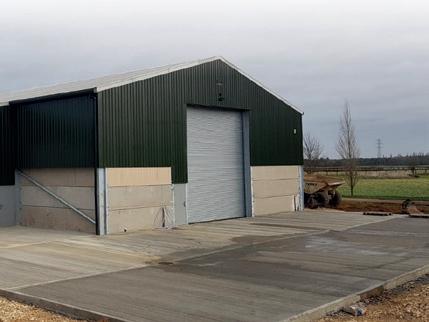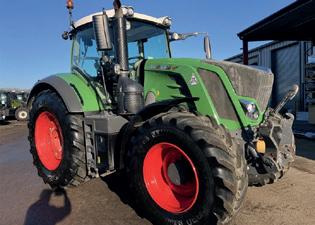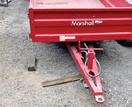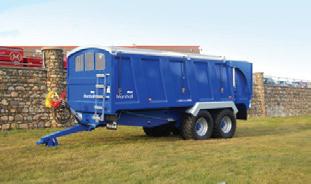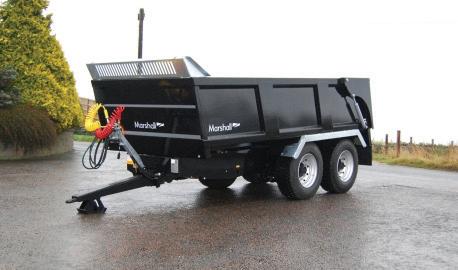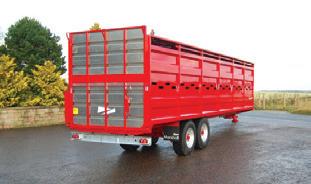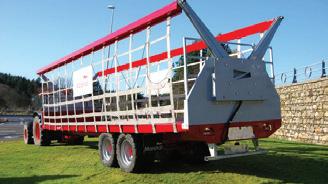Midland Farmer






Post-harvest
Livestock
Farm energy Solar offers renewed on-farm potential











Post-harvest
Livestock
Farm energy Solar offers renewed on-farm potential







EDITORIAL
Editor:
Johann Tasker | T: 07967 634971
E: johann@ruralcity.co.uk
Design:
Mark Shreeve | T: 01502 725839
E: mark.shreeve@micropress.co.uk
Advertisement production:
Polly Coleman | T: 01502 725841
E: polly.coleman@micropress.co.uk
Gemma Mathers | T: 01502 725813
E: gemma.mathers@micropress.co.uk
Callum Hoffman | T: 01502 725840
E: callum.hoffman@micropress.co.uk
ADVERTISING SALES
Danny Lewis | T: 01502 725862
E: danny.lewis@micropress.co.uk
Lawrence Kenny | T: 01502 725860
E: lawrence.kenny@micropress.co.uk
Harvey Taylor | T: 01502 725804
E: harvey.taylor@micropress.co.uk
Midland Farmer is a controlled circulation magazine published monthly for farmers and growers in the Midlands (Derbyshire, Herefordshire, Leicestershire, Lincolnshire, Northamptonshire, Nottinghamshire, Shropshire, Staffordshire, Warwickshire, West Midlands and Worcestershire) or companies supplying goods and services to the sector. To be included on the circulation list, a farmer must have a minimum of 70 acres of land, or 50 dairy/beef stock, or 50 breeding sows/250 growing stock, or 15,000 laying hens/broiler chickens. Intensive horticulture units are required to have a minimum of two hectares.
If you no longer wish to receive this magazine, please email your name, address and postcode as it appears on the wrapper to gemma.mathers@micropress.co.uk
© Countrywide Publications 2024
Published by Countrywide Publications, Fountain Way, Reydon Business Park, Reydon Suffolk IP18 6DH T: 01502 725800
Printed by Micropress Printers Ltd T: 01502 725800
hen times are challenging, it’s easy to point the finger of blame at other people – even when our own misfortune is not their fault.
Farming is going through one of those times at the moment. Off the back of a challenging year, we are straight into what many fear threatens to be another wet autumn. Some early drilled crops have already been washed away by floods – thwarting attempts by growers to get crops established by drilling early to beat the rain.
At the same time, the government doesn’t seem to know whether it is coming or going when it comes to farming policy. Neither can Defra say how that policy will be funded. As a result, everything appears to be on hold – at least until the Autumn Budget is announced by Chancellor Rachel Reeves on 30 October.
There are widespread concerns that funding could be cut right across government, including Defra’s £2.4bn annual budget. There is worry that the department could lose £120m per year or more –equivalent to the amount Defra has underspent in each of the past three years.
So great are these concerns that NFU president Tom Bradshaw is urging farmers to write to their local MP – reminding them that grow-

ers and livestock producers are fundamental to the nation’s food security – as well as providing cleaner air and water, looking after the environment and mitigating climate change.
To deliver all of this, the NFU believes the Budget for farming should be nearer £4bn. It’s a bold request when public finances are tight. But if you don’t ask, you don’t get – and it shows what could be achieved given adequate resources.
Rather than standing by and letting NFU leaders do all the lobbying, we would urge our readers to make the case for farming too. Write to your local MP. The Budget might only be a few weeks away but there is still time and a letter in the right direction might make all the difference.
There is little we can do about extreme weather – other than make our farms, homes and businesses more resilient to whatever storms it might bring. And some people might say there is little we can do to influence our politicians too.
But we can have a jolly good go – by standing together and making our case. After all, if we don’t present a united front and stand up for farming, we can hardly expect others to do it for us.
Johann Tasker Editor





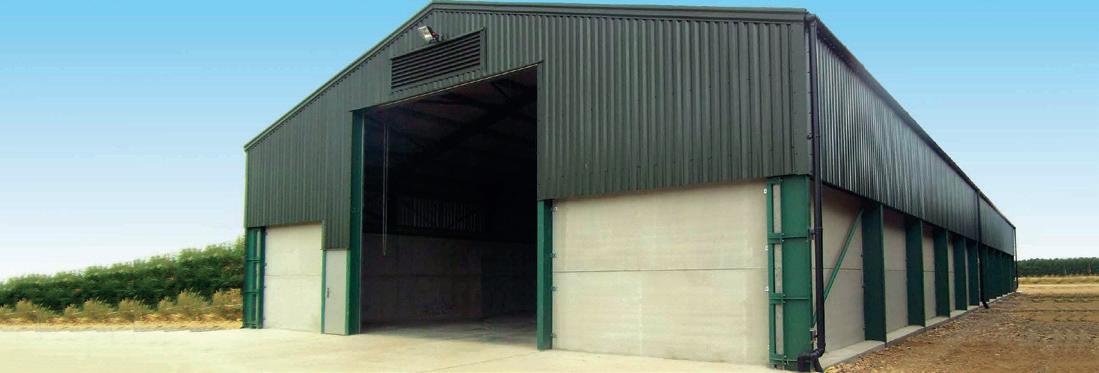



Budget battle: Chancellor Rachel Reeves and NFU president Tom Bradshaw

“

security by delivering a renewed and enhanced multi-annual agriculture budget of £5.6 billion.
“This budget is essential in giving Britain’s farmers and growers the confidence they desperately need to invest for the future,” he said.
A bigger budget would “deliver on our joint ambitions on producing more sustainable, affordable homegrown food while creating more jobs and delivering for nature, energy security and climate-friendly farming,” said Mr Bradshaw.
‘Black hole’
The run-up to the Budget has already seen repeated questions about how the Labour administration plans to fill the £22 billion black hole it argues was left by the previous government.
‘Tooth and nail’
Defra minister Daniel Zeichner said he was ‘“fighting tooth and nail” to deliver the resources needed to maintain the agricultural transition.
dercut by food imports produced to standards that are illegal in the UK.
To find out how to have your say, visit www.bit.ly/biggerbudget
Analysis by the Andersons Centre suggests an annual budget of around £4 billion is needed for farming in England. This translates to a UK-wide budget of around £5.6bn, says the NFU, which commissioned the research.
The £4bn for England comprises an estimated £2.7bn to meet the government’s environ-
mental goals, £615m for driving productivity and £720m to support the economic stability of agricultural businesses.
The NFU says this would deliver public goods for public funds, gives farmers the confidence to invest – and help meet government targets on sustainable food production, food security, the environment and net zero.
Autumn is starting to creep in, as are the darker nights and harvest seems like a distant memory but thankfully we are still busy.
Every now and again our investigation works can throw up some surprising things. Whilst wet spotting on a site near Stratford upon Avon we found 3 different types of clay tile in the same field. The best of which was square and purpose made in two halves. Clay tiles were not the easiest of things to lay but, those square ones must have been a right pain!! Thank the stars for flexible plastic pipes and modern machinery!
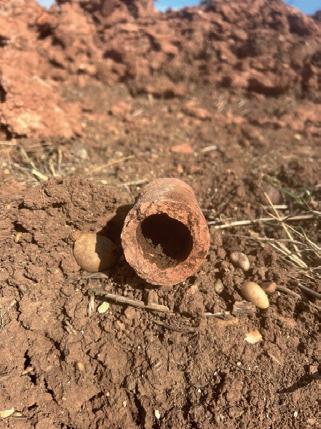

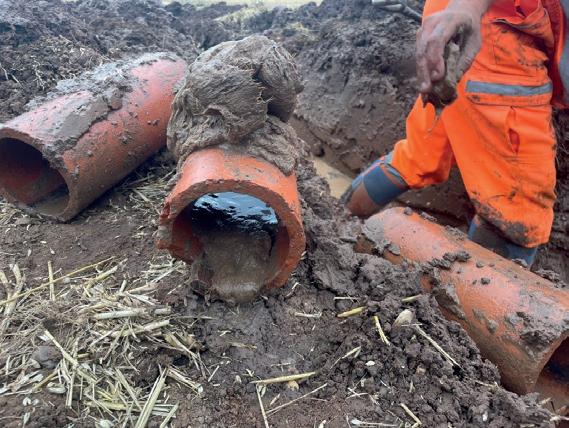
It wasn’t just clay pipes that we found blocked, even the 6” plastic was suffering.
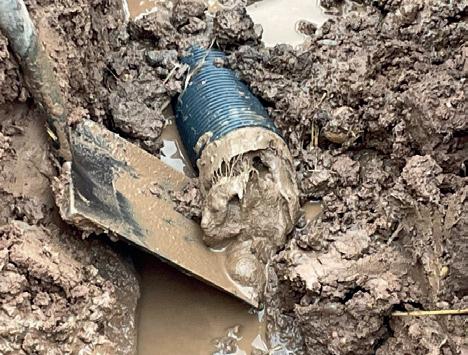

A 4” pipe silted up, at least it made a change from roots getting in the way.

Once all the repairs and replacements had been carried out, we could crack on with the 15:15 and start replacing the rest of the old scheme.


Sixty-eight jobs in Lincolnshire have been saved following the pre-pack sale of the Burdens Group.
Headquartered in Boston, the company supplied a wide range of farm and groundcare machinery from leading manufacturers including New Holland, Horizon, Amazone and JPM Trailers.
The Burdens Group offered both new and used agricultural machinery for sale from its depots in Sutterton, North Kyme, Louth and Brigg. It also had a division providing agricultural machinery for hire.
The company began to experience financial difficulties due to the pressures facing the farming sector following poor weather during 2023 and 2024, resulting in poor crop yields exacerbated by changes to the farm support system.
Although many farmers and contractors have continued to invest in
farm machinery, others have been changing machines less frequently. This reduction in expenditure has had a knock-on effect on some dealers and distributors.
Farmers reducing their investment in new machinery had a significant impact on the Burden Group’s turnover. Joint administrators Gareth Rusling and Robert Dymond of Begbies Traynor were subsequently appointed on 19 August.
A sale of the business and assets was immediately completed to Russell’s (Kirbymoorside) Limited in Malton, Yorkshire; and Stevenagebased Ernest Doe & Sons Limited, representing the northern and southern sales respectively.
“Having traded successfully for more than 40 years, the Burdens Group was a victim of problems hitting the farming sector with bad weather

Gareth Rusling: worked hard to conclude sale
and changes to farm support – resulting in its key customer base reducing their spend,” said Gareth Rusling.
The sales secured 68 jobs – reducing total creditor claims. “We worked hard to quickly conclude a sale to two experienced agricultural businesses, and it’s fantastic that the sales have saved the jobs of 68 people.”

The first spray should be applied within 48 hours of drilling, says agronomists

Effective weed control on earlier drilled cereal crops this season will depend on a successful residual programme, say agronomists.
Good chemistry is available – but a clear strategy is vital. With many crops going into the ground sooner rather than later, potential weed levels are higher and herbicides have more work to do, says Mark Hemmant of Agrovista.
"We can still use some cultural controls like drilling low pressure fields first, but we have to accept we’re going to spend more on herbicides and use the better products to control weeds."
The first spray should be applied within 48 hours of drilling. This will maximise efficacy, the longer you delay the greater risk of below par control, says Darren Adkins, of Bayer Crop Science UK.
"Don’t push the drill and forget about preemergence applications. Drill, roll if you have to and then spray over two days. If you leave it longer, weeds can start to germinate which reduces the efficacy of any spray.”
Prompt application is particularly important during mild weather because weeds can start germinating surprisingly soon in warmer soils. There a several actives available but Mr Hemmant stresses that this autumn calls for the best available.
"We’re big fans of Avadex (tri-allate), for me that’s the starting point," he says. "Then you’ve got to go to use your strongest grass-weed products.
“We’ll probably go the Proclus (aclonifen) + Liberator (flufenacet + diflufenican) route
pre-em – and then use Luxinum (cinmethylin) early post-em to get the best control across the programme."
For high weed pressure fields, the plan is most likely a spray at pre-emergence and a second spray a couple of weeks later to control weed germination throughout October into November.
But the risk of bad weather means you cannot depend on the second spray so make sure there is decent longevity in the pre-em, says Mr Adkins.
"Like everything this season it’s a balancing act with no simple answer. Using actives with longer residual activity at pre-em is a good insurance policy. Aclonifen and DFF are longerlasting so fit well at this timing."
Be flexible on the timing of the second spray to take advantage of suitable application conditions. Two weeks is a good starting point for planning, but weather could dictate a longer gap.
Heavy rain around the pre-em timing can wash herbicides down to the crop germination zone and cause crop effects. "We saw last autumn that cinmethylin in particular can be hot on crops,” says Mr Adkins.
Winter barley and lighter soils also reduce the margin for error and need good attention to detail to achieve the best result. Drill crops to at least 32mm depth, properly covered with no open slots to keep the crop seed well away from high doses of residual herbicides.
“If there is heavy rain around, then it is safer to use a sequence of herbicides than a big stack. This also means you don’t run the risk of really heavy rain washing them all away completely."
High ergot harvest makes
armers face an increased ergot risk this season following high levels of the fungal disease in harvested grain crops.
Ergot sclerotia can persist in the soil or on infected seed – prompting reminders that growers should consider ergot control when choosing a seed treatment to help reduce the disease threat.
Factors associated with an increased risk of ergot include wet weather at flowering and high grass weed pressure – especially blackgrass. Both were present during the past season.
Although the immediate concern is the marketability of cereal crops, growers should also take steps to ensure these difficulties are avoided next harvest, says Tom Wheelhouse, technical specialist for crop protection company UPL.
“Colour sorters are in high demand to remove ergot in grain samples and infected seed lots,” says Mr Wheelhouse. “Even if it is colour sorted out of a seed sample, treatment is strongly advised because particles of ergot will still be present.”
The same sclerotia particles will also be present in infected soils. These fields should ideally be sown with a non-cereal break crop, says Mr Wheelhouse, with particular attention paid to grassweed control.
“Selecting a seed treatment with activity on ergot will also greatly help to reduce the risk. Only two products mention ergot on its label,” says Mr Wheelhouse, adding that Ranconai-Mix (ipconazole + imazalil) has the most substantial reduction claim.
“The label states that Rancona-iMix is effective for the suppression of ergot particles in contaminated seed stocks and the reduction in the spread of spores,” says Mr Wheelhouse.
“In reality, UPL trials indicated this will reduce the incidence of ergot by 40-60%.”
• Wheat variety performs well late-drilled
• Withstood extremely wet winter weather
• Looked clean throughout entire season
Later drilled winter wheat has performed well for third generation Staffordshire farmer Rob Atkin – despite a stern test during a challenging 2023/34 season.
Mr Atkin farms 386ha of combinable crops at Field Farm, Field, near Uttoxeter. He grows feed wheat, milling oats, feed and malting barley, beans and oilseed rape, as well as 101ha of grassland that is home to 250 head of Belgium Blue cattle.
Last year was his first time growing LG Typhoon, with a 6ha field sown to assess the variety’s performance. It seemed to fit the bill and suit our heavy land, as well as being a good second wheat performer, so we decided to give it a try.”
“We saw LG Typhoon in Agrii trials in 2022 and were really impressed with how it looked; it was clean, stood well, and has relatively high yield potential. We also try to pick varieties that are competitive in the spring against bromes and blackgrass.”
Mr Atkin usually starts drilling in the second week of September and is all done within a month. But last autumn’s wet conditions meant the field was drilled after forage maize much later than planned on 17 October.
“We got the maize off, but then had 65 mm (2.5”) of rain, which meant we couldn’t get back on the land for a while, and had to plough and combination drill instead of our usual minimal tillage. It was right at the end of our usual dtilling window.”
Despite the late start, which was followed by the exceptionally wet winter, Mr Atkin says the crop established
well and was less affected by the tough conditions than other winter wheat varieties grown on the farm.
“It was a little slow to get going, probably due to the cold, wet soils, but once it did, it withstood the wet conditions really well,” he explains.
“Disease-wise, it has also been impressive; it was one of the cleanest varieties on the farm last season, despite some others breaking down to Septoria later in the season.”
Crops stay clean
That cleanliness is even more impressive given the generally high disease pressure last year, and the fact that Mr Atkin employs a reduced two-spray fungicide regime on most wheats, which does not follow conventional timings.
“We want to utilise varietal resistance and extend the cover fungicides provide, so essentially both sprays went on mid-way through the conventional timings.”

The first was spray was applied at the equivalent of T1.5, while the second was at T2.5. “While we are reducing the number of sprays, we do use robust chemistry at those timings.

The first treatment was 0.8 L/ha Cleancrop Vulture (prothioconazole + tebuconazole) plus 1 L/ha Phoenix (folpet), with additional micronutrients and trace elements. This was followed four weeks later by 1.3 L/ha Boogie Xpro (bixafen, prothioconazole + spiroxamine), again with trace elements.

“The odd field did need an additional T3 last season, but we stuck with the twospray approach on the
LG Typhoon, and it looked really clean all the way through.”
This resilience meant LG Typhoon was one of the best performing varieties on the farm this harvest, although Mr Atkin says all winter wheat yields were around 2.5 t/ha (1 t/acre) below normal, due to the wet conditions from autumn to spring.
Mr Atkin is keen to give LG Typhoon another go this season, and is increasing the area of the variety to 20 ha, which he hopes to sow by the end of September. “One field will be a first wheat after oilseed rape, but we’ll also try the variety in a second wheat position to see how it performs there.”
He also hopes to be able to avoid the need for the plough this autumn, and get back to a minimal tillage system, based around a shallow disc-based cultivation after harvest, to work the top 10-20 mm of soil, which is allowed to green-up, before spraying off with glyphosate and then drilling with the










of our bestperforming varieties



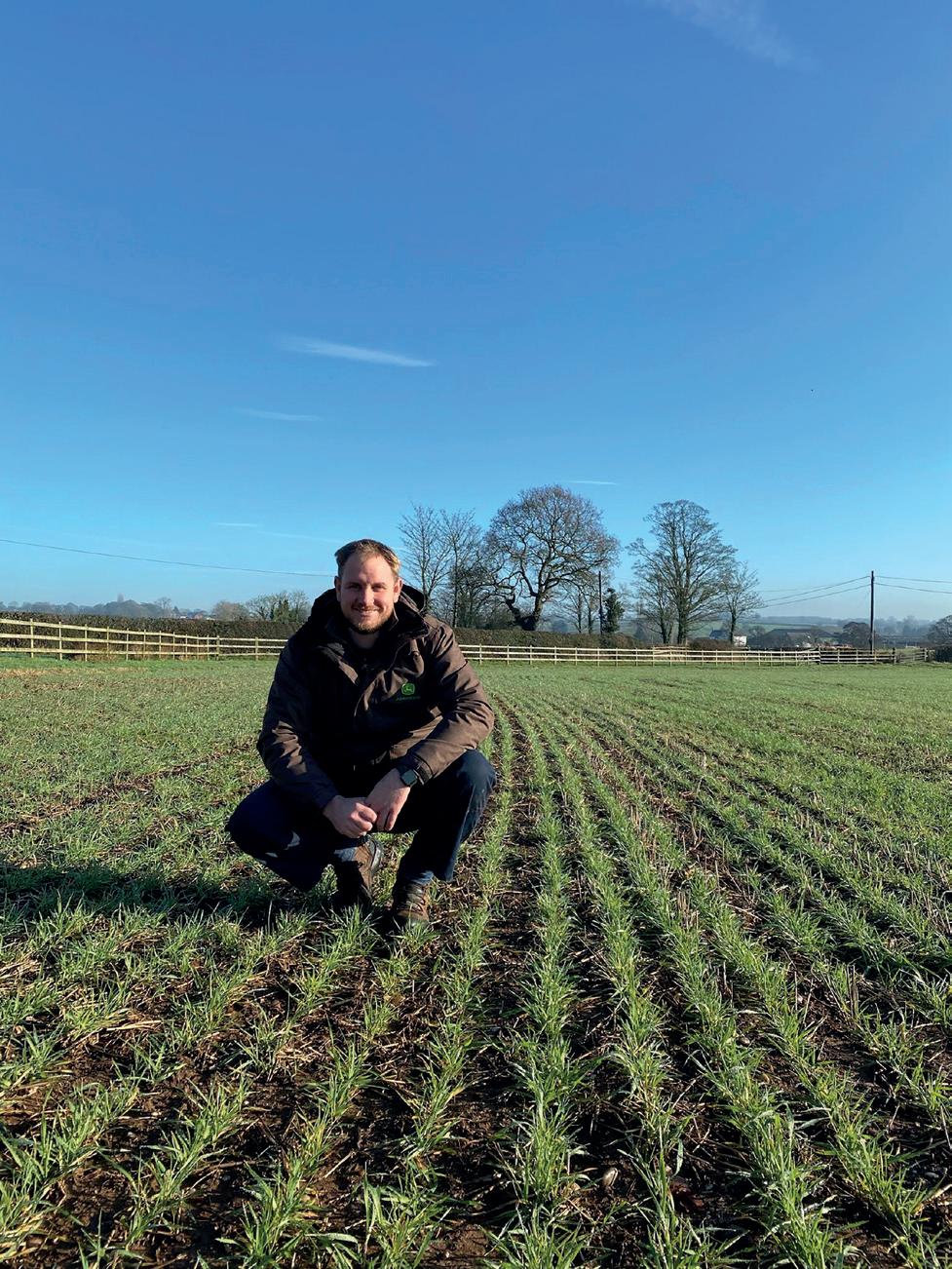
wheat after maize or oilseed rape this season, and if it performs, we’ll look to multiply up the area next year with home-saved seed.”
Mr Atkin concludes: “It has been really hard to evaluate varieties this season given the weather, but from what we’ve seen, LG Typhoon has done well and seemed to cope better with the conditions, so we’re keen to see how it, and other varieties, perform in - hopefully - a more normal season.”
“The variety has demonstrated a consistency of yield performance from its agronomic characteristics, to perform in both the standard and later drilling dates, showing a robustness from its plant development, and great disease resistance profile.
“For growers seeking security for on-farm performance in challenging years of high disease pressure, then LG Typhoon is a variety worthy of consideration.”
380 ha (930-acre), mixed arable and grassland family farm
Predominantly heavy copper marl soils
Cropping includes winter wheat, milling oats, feed and malting barley, winter beans, forage maize, oilseed rape and cover crops (trialled ahead of maize)
101 ha of grassland, home to 300-350 Belgium Blue cattle
Predominantly min-till since 2003, plus some direct drilling where possible Strong focus on protecting water quality (working with South Staffs Water)
Annual rainfall usually 890-900 mm - 1,200 mm in 2023
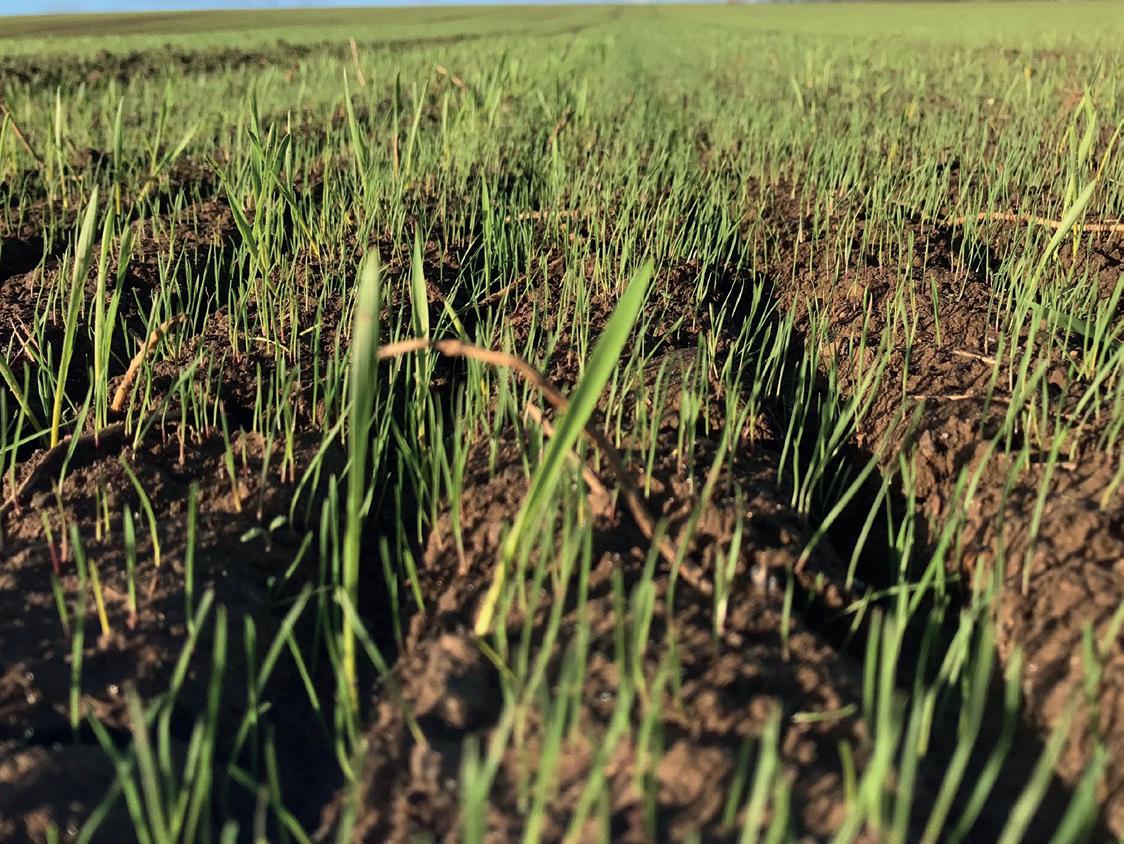
Winter wheat growers are being urged to take steps to avoid the potential downsides of drilling early this autumn.
While the temptation to establish crops early is understandable following washout conditions last autumn and winter, being prepared for the added risks is crucial, says ProCam regional technical manager Paul Gruber.
“Early drilling is for people prepared to invest extra effort into managing crops, potentially for the entire season. If you aren’t able to do this, then question whether it’s right for you.”
To help growers, Mr Gruber has outlined five key areas to look out for:
Drilling earlier increases pressures from pretty much all grass weeds.
Remember, we’re coming off the back
of a season with high grass weed burdens in crops, after the wet weather difficulties of applying herbicides last winter. So weed seed carryover is set to be high.
High grass weed pressures increase the need to bolster herbicide strategies – for example using a residual pre-emergence herbicide followed by a combined residual plus contact treatment at peri-emergence. But don’t rely solely on herbicides.
I advise killing off at least one flush of blackgrass in stale seedbeds before drilling. Without this, it could be disastrous in fields drilled too early because huge weed numbers will germinate thick and fast in the crop.
Also, drilling while soils are still warm will mean residual herbicides are degraded faster, shortening their period of activity. And dry soils will reduce residual herbicide performance.”
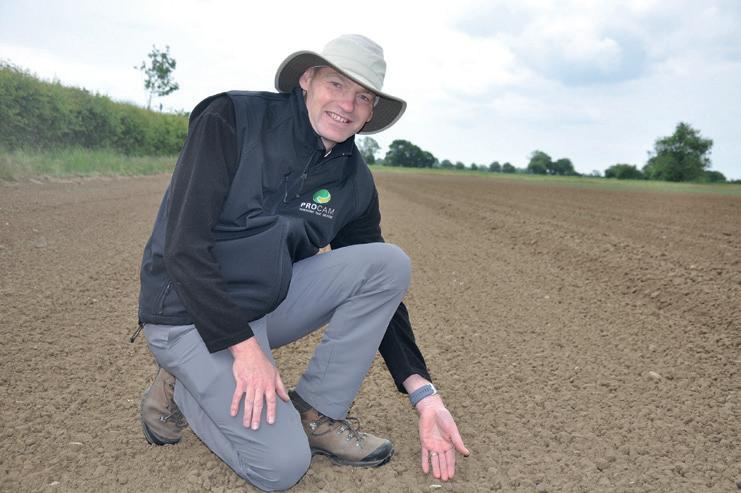
Disease pressures also increase with earlier drilling, particularly Septoria.
Typically, we see much more Septoria in September-drilled wheat than Octoberdrilled. And while earlier drilling, in theory, reduces yellow rust risk, a mild winter will encourage rust build-up. This was one reason why we saw bad brown rust this year.
Foliar disease burdens, as well as pests and weeds, are likely to be higher in second wheats, where there’s also the complication of take-all, particularly if drilling early or into stubble.
Using a take-all seed treatment on true second wheat is obvious, but spring wheat and spring barley also carry take-all, and there’ll be plenty of wheat following spring barley this autumn.
Eyespot risk is also increased in second wheat drilled early, and in first wheat after maize. Some varieties have the Rendezvous gene which increases resistance, so seek advice.
Early drilling also encourages aphids, and
therefore barley yellow dwarf virus (BYDV).
This raises the need for timely aphicides, but ensure green bridges are also destroyed far enough ahead of drilling to ensure aphids can’t directly transfer from decaying grass weeds or volunteers, as early-planted crops can emerge quickly if conditions are conducive to growth.
Also, consider varieties with BYDV tolerance or resistance, especially further south. Gout fly risk also increases with early drilling, so be careful if you have a history of gout fly as there’s no chemical control, or if you have grass weeds which are a gout fly host.
Early drilling could also have longer-term consequences – not least increased lodging, which will not manifest until next summer.
Choosing stiffer-strawed varieties is key. But so too is correct seed rate. Earlier drilled crops are in the ground for longer so tend to grow taller, and too high a seed rate creates densely-packed tillers and encourages taller growth.
Correct variety choice is vital when drilling winter wheat early. But as well as varieties with good yield, stiff straw and good disease resistance, you want varieties that are slower developing to account for them being in the ground for longer.
Seed rates need reducing compared with drilling later, but check what’s appropriate for each variety, location and the conditions. You don’t want crops sown too thickly. But if you’ve got grass weeds, sowing too thinly reduces crop competition.
If home saving seed from this harvest, ensure seed is fully cleaned and tested and make sure seed batches are free of ergot, given the prevalence of this in crops this last season.
Similarly, if using over-yeared seed that you couldn’t drill last winter, have this tested – not just for germination but also vigour as both can decline.
Farmers and industry stakeholders will come together to discuss the future of crop protection at a key conference this autumn.
The need to balance food production while protecting the environment will top the agenda at the 2024 British Crop Production Council (BCPC) Congress – held on 26-27 November at the Cedar Court Hotel, Harrogate.
BCPC general manager Julian Westaway said: “We are excited to introduce our impressive line-up of engaging speakers from government, regulators, leading commercial companies, organisations and academia.
“These industry leaders and experts will share their knowledge on a wide range of topics related to issues from pesticide regulation, crop production and sustainability to pest control technologies and integrated pest management.”

The conference will open with a dis cussion around the government’s Sus tainable Farming Incentive – which is designed to incentivise farmers who undertake environmental measures alongside food production.
But the SFI has also encouraged some growers to take land out of food production completely. Rather than producing food, this land is being used to boost biodiversity, soil health and mitigate the effects of climate change.
Although Defra has limited the amount of land which can be put into non-productive options, critics con tinue to warn the SFI could potential ly be detrimental to the country’s food security.

Other conference sessions will discuss the evolving regulatory framework to support the adoption of the various components of integrated pest management (IPM) – including biocontrol and precision applications.
A second conference stream will ex-
best use of new emerging knowledge and technologies.
On the final day, the future of pesticides becomes the morning’s central theme, while the afternoon focuses on how regulators are looking to manage the approval process of plant protection products and biocides.
For full details about the congress, visit www.bcpccongress.org/

Looking to convert your existing agricultural buildings to residential or for a flexible commercial use?
In many instances, these works can take place under a prior approval application under Class R or Class Q.
Look no further, as J J M Planning is able to assist with all of these matters and much more. We would be delighted to help you realise the development potential of your site. Please get in touch using the details below for a no-obligation site visit or discussion.

- Professional advice from Chartered Town Planner (MRTPI)
- Providing detailed advice in an efficient manner
- Helpful & Friendly
- Over 20 years experience with multiple sectors
- Access to an experienced team of Technical Consultants
- Track record of success
- Competitive pricing
- Good working relationship with councils
www.jjmplanning.co.uk planningjjm@gmail.com







New winter wheat variety
SY Cheer has been awarded full Group 1 milling status by UK Flour Millers in time for autumn drilling.
SY Cheer is the newest of only five Group 1 varieties on the winter wheat Recommended List for 2024/25. Plant breeder Syngenta it could hold strong appeal for growers looking to reduce some of the risks of growing wheat for breadmaking.
matching the regular milling threshold. Other attributes include a Hagberg falling number of 299 and specific weight of 79.5 kg/hl, much higher than the typical thresholds of 250 and 76 kg/hl.
Please
It has disease resistance ratings of 7.4 against yellow rust, 6.0 against Septoria tritici and 5.5 against brown rust. This bal-



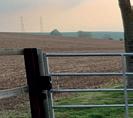





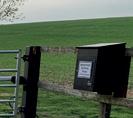


As well as exceptional grain quality, SY Cheer boasts consistent yields – and no major weaknesses to the common foliar wheat diseases – including rust, says Syngenta seeds technical manager Matthew Bull.
Significant interest
“The Group 1 winter wheat market hasn’t had a new recommended variety since 2017 and was in desperate need. We see SY Cheer

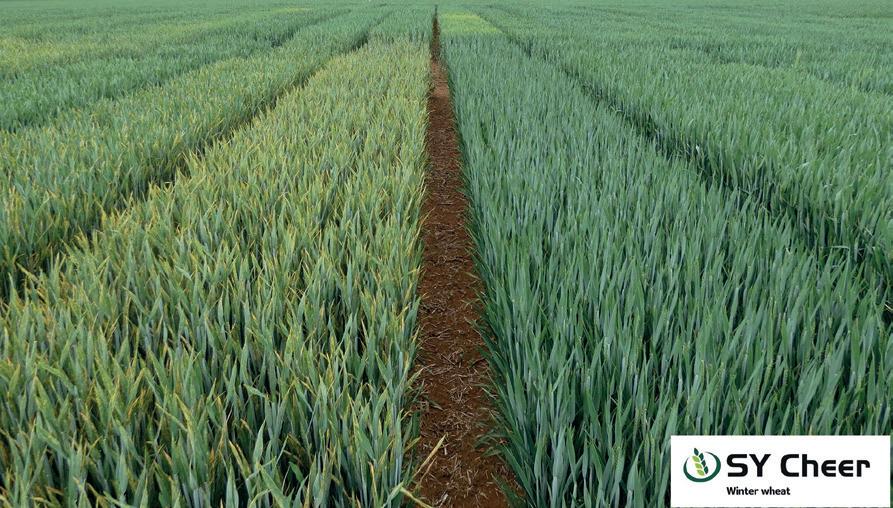
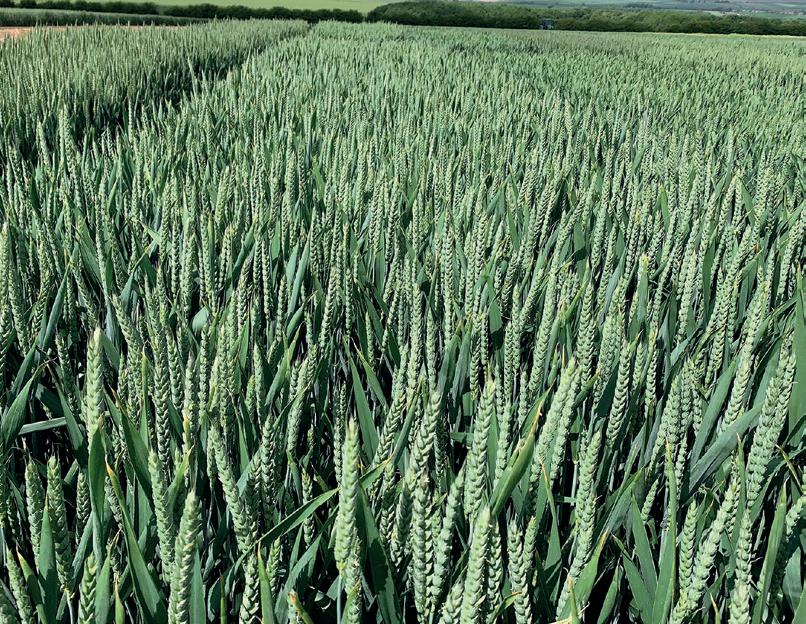



Clockwise from above: Demand for Group 1 milling wheat remains high; Syngenta says SY Cheer disease resilience (right) underpins its high yields; SY Cheer is newest of five Group 1 winter wheat varieties; Matthew Bull says SY Cheer plugs an important gap against rust
anced foliar disease resistance profile underpins its high and stable yields, says Mr Bull.
Breakthrough variety
Syngenta seeds portfolio marketing manager, Kathryn Hamlen, says the combination of quality, yield and disease resistance makes SY Cheer a potential breakthrough variety for growers.
“Over recent years the percentage of the UK wheat area planted with Group 1 varieties has dropped. Yet demand for Group 1 breadmaking wheat remains high. SY Cheer could reinvigorate the Group 1 market to help stabilise domestic production.
“We know weather extremes can make achieving grain quality specifications a gamble. The high quality of SY Cheer will hopeful-
ly bring reassurance to growers. The wet 2023 harvest illustrated the importance of a variety with an inherently high Hagberg.
“Similarly, with unpredictable disease epidemics, its disease resistance ratings and high untreated yield should give reassurance. Rust can reduce both yield and quality.”
Agronomically, Mrs Hamlen says SY Cheer has wide drilling date flexibility from mid-September to late January. It offers good lodging resistance with relatively long straw and medium maturity, she adds.
“Overall, we see SY Cheer as a high quality variety for milling wheat growers to consider as part of their portfolio.”

Large array of stock covering over 100,000 different parts in power transmission and agricultural & plant requirements. Our extensive range includes: JCB, Case, Claas, Vaderstadt, Simba and many more.
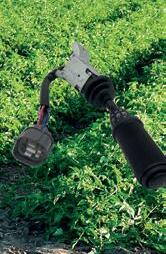

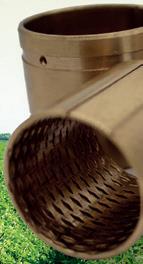

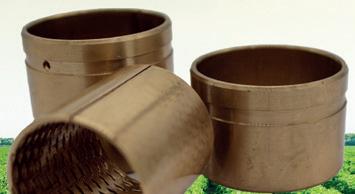


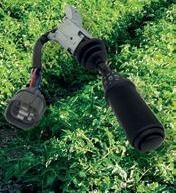























Growers could combat cabbage stem flea beetle on winter oilseed rape by applying silicon to the crop, say independent agronomists.
Plants use silicon – the primary constituent of glass – as a physical barrier against attacks by pests and pathogens, laying down a hard crystal layer of ‘opals’ within the leaf cuticle.
“Two to three applications of silicon have been sufficient to reduce the feeding damage appreciably,” says Chris Coates, an independent agronomist with Sustainable Ag Solutions.
Mr Coates has been recommending silicon in place of insecticides for the last three years. He started by applying Zeme (potassium silicate) in tank-mix with an insecticide, before using silicon alone with no appreciable change in results.
“Applications must be made early but should be balanced against the plant presenting a big enough target,” suggests Mr Coates. “Standard cotyledon stage is ideal.”
As the silicon is not a control for flea beetle, Chris says applications
should be made prophylactically.
“There’s been very little flea beetle damage so far this year, which I suspect is down to the wet weather having disrupted insects’ lifecycles. Now we’re monitoring flea beetle levels and will be primed to make applications if numbers rise. If numbers don’t rise enough to merit a separate application, then we’ll wait to tank-mix Zeme with the first herbicide application. At £7/ha, it’s a very affordable, very effective option for controlling this pest without recourse to insecticides.”
Independent agronomist Dan Lievesely, of DJL Agriculture, has also been exploring silicon’s potential to combat flea beetle. “I’ve always believed that disease and pest pressures come easily to weak crops,” he explains.
“Besides its physical properties, silicon has a role in several plant metabolic functions. Boosting the crop’s inbuilt resilience to attack – whether from pests or pathogens – has to be a more sustainable option.”
Three applications are recommended before Christmas
Mr Lievesely says he has used various forms of potassium silicate over the last five years. Three applications of Zeme before Christmas also helps nutrient management and reduces lodging, he says. “The first at cotyledon stage, the second at 1-2 true leaves, and the third as the last application once you’ve applied Kerb (propyzamide). We’ve avoided insecticides completely since starting to use silicon.”
David Marks, co-founder of Zeme supplier Levity Crop Science, says silicon is vital for phosphate redistribution and trace element transport. “It also improves nitrogen recovery – especially during dry spells.”
Dr Marks describes Zeme as potassium silicate on steroids. “Standard foliar silicon always has some effect, but because the plant quickly locks it away into opals – a one-way process – it becomes unavailable to the plant again.

“Zeme’s been formulated with naturally occurring silicon transporters that allow the silicon to move within the xylem, so the plant can actively manage absorption and distribution.”
Farm stays offer a lucrative and rewarding opportunity to diversify your business. With an average annual income of £35,000, holiday letting could provide a significant boost to your earnings.


In 2023, these glamping pods were booked more than 130 times. Joint owners

Gwion & Mared and Dylan & Catrin earned just over £90,000 as demand for farm stays and glamping continues to rise.

Speak to our Holiday Letting Agents today and find out how much you could earn. Scan the QR code for more information and to request a call back, or call 01244 617977 to speak to an advisor.


The past few years have seen some challenging conditions for Sugar Beet, but Gadwall excelled; delivering superb yields in the APHA Sugar Beet Variety List for UK and Northern Ireland and in field testing on Club SV farms. Excellent establishment with SV priming and pelleting in 2024, highlight why it has been fast-tracked for UK growers.
Gadwall is available for 2025 sowing with a wide range of seed treatments against pests and diseases; helping you to get all your ducks in a row.








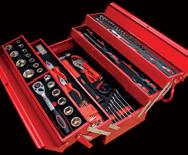

























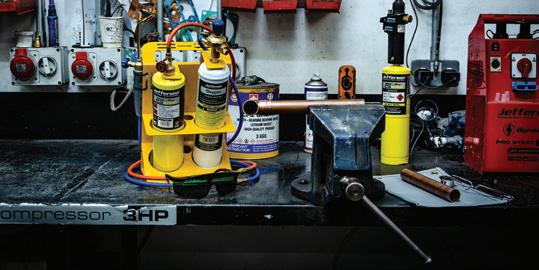



















• Virus threat expected to be high
• No-insecticide crops pay £45/ha
• Think before abandoning sprays
Growers face a tough decision when it comes to tackling barley yellow dwarf virus in autumn cereal crops.
With high aphid pressure forecast, the virus risk is expected to be high. Yet the Sustainable Farming Incentive option IPM4 is offering farmers £45/ha not to use insecticides on arable and permanent crops.
The payment means many growers many be tempted to reconsider their use of pyrethroids, says agronomist Chris Martin of Agrovista, who has been exploring ways to minimise BYDV yield losses.
With a perfect storm scenario of early drilling, aphids already populating high levels of volunteers and mild autumn temperatures, Mr Martin believes abandoning pyrethroids would be taking a massive gamble.
Pros and cons
“After some incredibly wet recent autumns, growers understandably want to drill early to ensure they actually get a crop in. But the flip side is that delayed drilling is still one of the best ways to avoid the worst effects of BYDV.”
Glyphosate is often used to destroy the green bridge from last year’s stubble. But that could be made more difficult this year with lots of volunteers returned to many fields and wingless aphids surviving on this material post-drilling.
Pyrethroids are still worthwhile
“Some growers will turn to winter wheat varieties with a lower susceptibility to BYDV, but they are not a silver bullet,” says Mr Martin. “In my experience, they tend to perform much better against BYDV when partnered with an insecticide.”
All things considered, Mr Martin says pyrethroids are still worthwhile in high pressure aphid situations. “Quite simply, pyrethroids still work successfully on susceptible pests and are one of the few insecticides that can
still be used on cereal crops.”
Although all pyrethroids are susceptible to some level of resistance, Mr Martin says they are also all different in their chemical make-up – so the best strategy is to select different pyrethroids for different crops.
The pyrethroid esfenvalerate, for example, is a potentially better candidate for cereal crops with resistance issues because it isn’t used on oilseed rape. “It’s both less aggressive and poses a lower toxic risk to beneficial insects,” says Mr Martin.
The sole manufacturer of esfenvalerate is Sumitomo Chemical. Business manager Simon Leak says the

Aphid pressure on cereal crops is forecast to be high this autumn Below: Not spraying risks being a massive gamble, says Chris Martin

company takes product safety to beneficials seriously. Esfenvalerate has lower toxicity levels to bumblebees, he says.
The main vectors for BYDV are bird cherry-oat aphid and grain aphid. Grain aphid is moderately resistant to pyrethroids but there are no current reports of resistance or control failures in bird cherry-oat aphids, says Mr Leak.
The impact of esfenvalerate on webspinning spiders – the main predator of aphids – is minimal, with the active only proven to be initially disruptive to the spiders with no long-term harmful effects, he says.
Compared to other pyrethroids, esfenvalerate has the lowest amount of active ingredient at its recommended BYDV dose rate, says Mr Leak. It also has longer photo-stability, he adds – a useful property in an insecticide.
Barley yellow dwarf virus is the UK’s most economically important cereal virus, says the Agriculture and Horticulture Development Board.
Severe infections can cause losses of up to 60% in winter wheat and 50% in winter barley. The AHDB says these loss levels are rare but it is continuing to monitor BYDV in cereal aphids this autumn.
To tackle the virus, the AHDB recommends selecting lower-risk fields, such as fields with a low amount of surrounding grassland. It also suggests encouraging natural enemies, such as predatory beetles and web-spinning spiders..
Green bridges between crops should be managed appropriately – for example by waiting
five weeks before cultivating and sowing, and destroying any weeds – especially annual meadow grass and volunteer cereals
Aphid colonisation is generally lower on fields with minimum tillage. The AHDB says this is because retained straw may also benefit natural enemies. And it recommends drilling crops as late as possible.
Growers should also use monitoring tools to assess aphid activity, manage aphid colonisation and spread, minimise general stress to plants and select BYDV-tolerant varieties, where appropriate. For the latest updates, visit https://insectsurvey. com/aphid-bulletin
• Drilling date has bigger role to play
• Milder winters affecting rape yields
• Growth regulator can reduce losses
Applying a plant growth regulator (PGR) to early drilled oilseed rape could hold the key to better yields, say experts.
Genetic improvements are giving higher yields in trials. But this isn’t translating to the field – possibly due to what industry leaders believe is a combination of milder winters, earlier drilling and crop physiology.
Only 8% of British growers currently use a PGR on autumn oilseed rape. But more should do so, says Chris Guest, managing director of plant breeder NPZ UK, who is calling for a mindset change.
“Growers used to start drilling at the end of August but we have seen a huge shift in drilling date, with 75% of oilseed rape now drilled-up by the middle of the month,” says Mr Guest.
Forward crops are better able to withstand adult cabbage stem flea beetle (CSFB) damage – but these crops are prone to another yield-limiting challenge, he adds.
“Growers are often frustrated that they aren’t getting the yields we see in trials. This is largely about drilling date – oilseed rape in trials tends to be sown over a month after those in the field.”
Oilseed rape plants start to develop flower buds and side shoots once they
We’ve seen a huge shift in drilling date “
Bud and root differentiation usu ally starts in October and ends at the beginning of March. But it can be over by January in warmer winters, sug gests research by Ute Krupf, of the University of Applied Sciences in Kiel, Germany.
“This, in turn, has pushed flower ing forwards into months where they are prone to frost damage – with det rimental impact on seed quantity and therefore yield,” explains Mr Guest.
This could partly explain why oil seed rape crops grown during the cold er winters of 2008-2014 regularly yielded 5-6t/ha, while those grown during the warmer winters of 20152023 have recorded much lower yields.
“With milder weather and the lack of winter shutdown, these forward rape crops are racing through those growth stages that determine yield po tential quicker,” says Mr Guest. “It could be limiting yields by up to 30%.”
Reducing losses
Applying the research in the field in the UK and across Europe, NPZ has shown that autumn PGR applications hold back crops, giving them more time to create more buds and consequently, more pods and seeds.

had a good start and many will reach four to six leaves by mid-October or before,” she says.
“With the changes in climate, an autumn PGR is well worth considering, but for those earlier drilled crops that are reaching the relevant growth stages, it’s arguably essential,” adds Mr Guest..
Clockwise from above right: Clare Tucker, of BASF; Chris

The only PGR authorised for autumn use is Caryx, which is manufactured by BASF. Getting the best from the product is all about timing, says BASF business development manager Clare Tucker.
“Those sown at low seed rates will have space around them but any populations of 35-40 plants/m2 or more will grow tall quickly, with weak lower stems, making them more vulnerable to flea beetle larvae damage and lodging in spring.”
Ms Tucker recommends the use of Caryx for any crops reaching four to six leaves in September or by mid-October. It may be necessary to do further canopy management in the spring, she adds.

“Timing is crucial. Plants larger than four to six leaves will be too big to benefit fully, so don’t delay applications. Growth starts to slow down by late October and PGR activity will be much less.”
As well as preserving yield potential, autumn applications of Caryx reduce lodging risk and increase resilience to CSFB larvae feeding damage.”
Restricting the upward plant growth also improves large root collar diameter and helps plants better withstand damage from cold and wet soils.
ADAS head of crop physiology Pete Berry agrees: “Waiting until you've got eight or nine leaves is definitely going to be less beneficial.”


Beet Cyst Nematode continues to spread, threatening yields. Hoopoe has been tested thoroughly in the presence and absence of BCN consistently giving excellent performance. It allows growers to mitigate risk of this damaging pest and lack of genetic diversity currently available. Following on from Jura and Jackdaw, Hoopoe’s excellent performance against BCN is why it has been fast tracked for UK Beet growers. Hoopoe is available for 2025 sowing with a wide range of seed treatments against pest and diseases to help you stand out from the crowd (and ruffle some feathers on the way).






Early signs from both commercial and trial crops suggest that early lifted sugar beet is performing well – despite late drilling and above average rainfall.
Rain washed away the threat of virus yellows this season, while good summer temperatures in recent weeks have helped the crop to pile on yield. The incidence of foliar disease is low so far, say agronomists.
Beet intake opened on 16 September at British Sugar’s Bury St Edmunds and Wissington factories. Newark followed by opening on 23 September with Cantley scheduled to open on 7 October. Trial crops are also being lifted.
“We have started harvesting replicated plots testing the next generation genetics and treatments with our bespoke mobile tarehouse,” says Wayne Tonge, tri-
als manager for sugar beet breeder SesVanderHave.
In parallel broader screening of commercial performance across the network of Club SV Growers continues apace, with early indications of good yields, sugar contents and low impurities from new varieties Gadwall and Hoopoe.
“Results from our beet cyst nematode trials for Hoopoe are demonstrating superior performance to Jackdaw which many growers planted this spring,” says Mr Tonge.
The mobile strip trial harvest is proving extremely popular with SesVanderHave Club SV growers. It is generating considerable interest when neighbours see how easy and fast the process is, says seed sales advis-
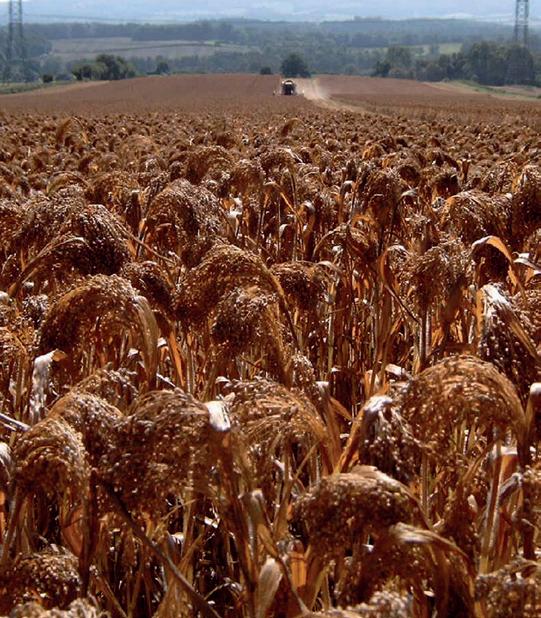
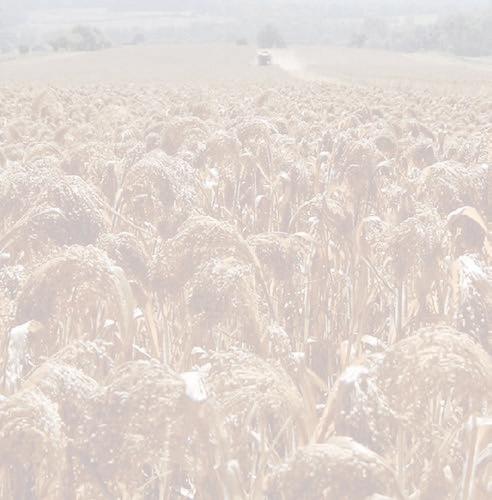



er Hector Adcock.
“It’s giving growers some really useful insights into performance,” he explains.
“Combined with our drone image analysis, linked weather station network and the immediacy of generating data and the ability to sequential harvest using GPS locators it’s proving an extremely powerful tool.”
Field performance is variable as expected after late drilling and high pressure from damping off and soil pest complex. But results are giving growers instant insight into real-time performance on their own farms with their own inputs and agronomy.
SesVanderHave says it is committed to continued investment in extending its trials network from the current 90ha. This will ensure growers have access to more relatable and reliable performance data, it says.



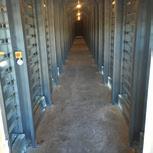



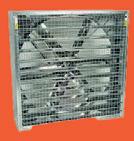

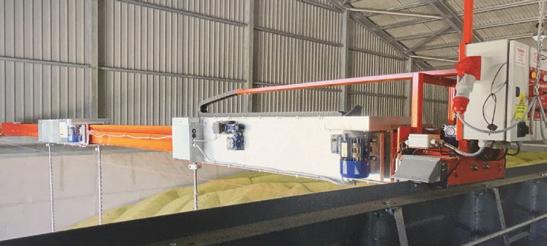






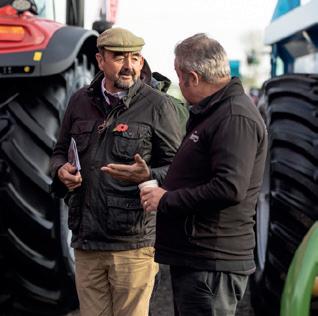




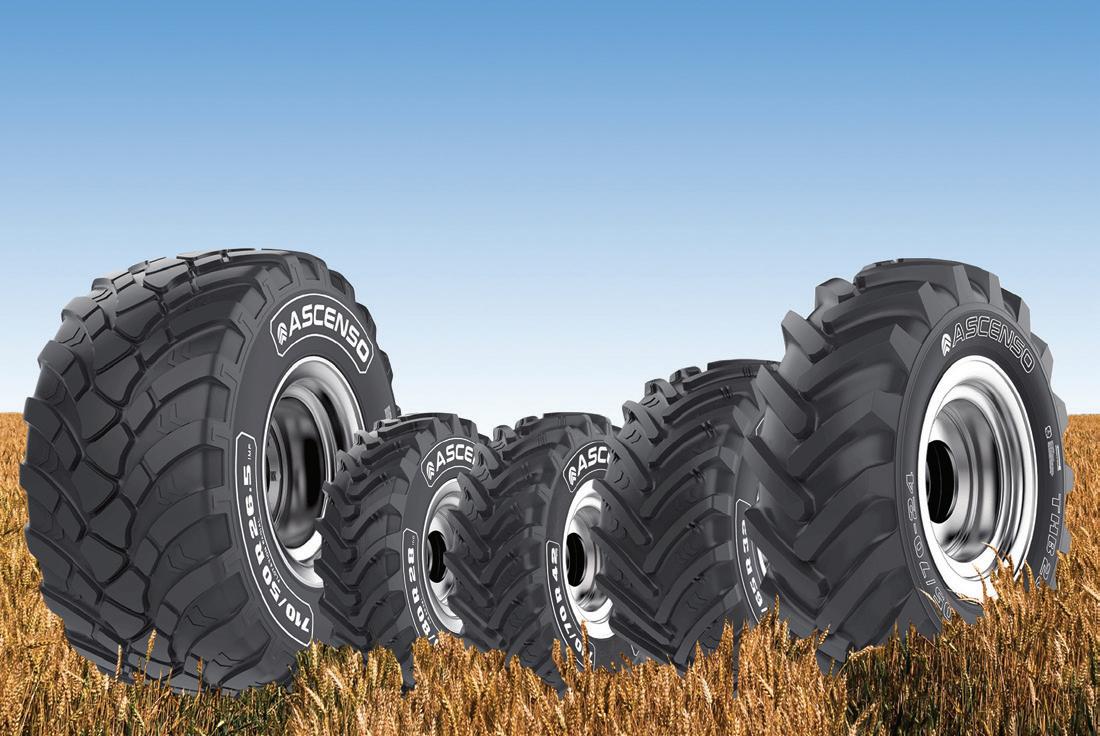


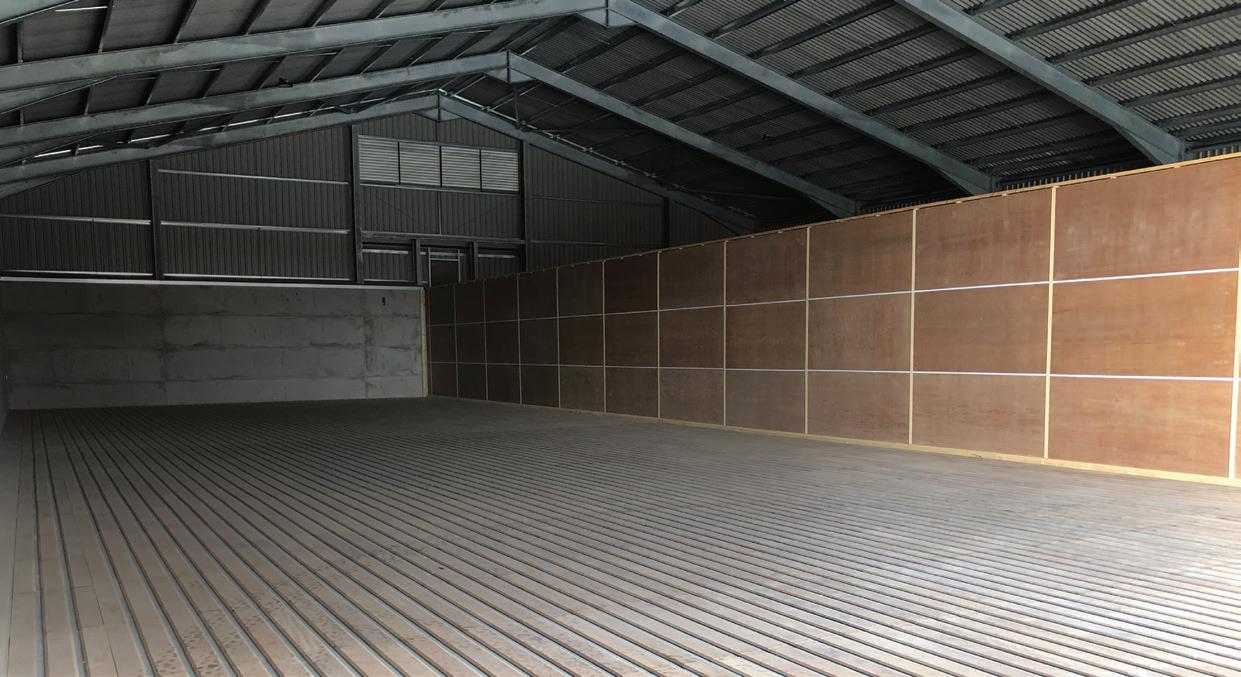
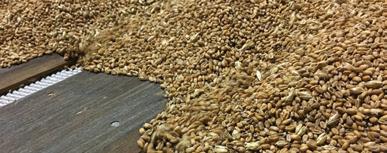
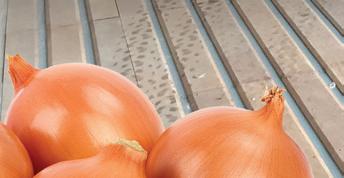







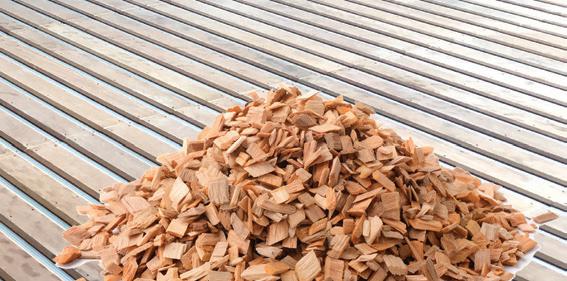




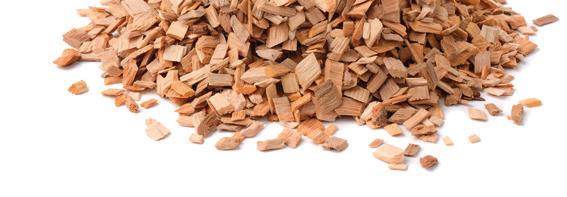


• Wheat and oilseeds under pressure
• Smaller harvest set to be confi rmed
• Little movement in forward prices
Astronger Pound could challenge UK grain prices in the coming weeks – with UK interest rates now higher than many competing economies.
Sterling reached its highest level against the US dollar for more than two and a half years last month. It follows the Bank of England’s decision to keep interest rates unchanged at 5% – and recent cuts to interest rates in the US and Eurozone.
“A rise in the value of sterling usually puts downward pressure on UK grain and oilseed prices,” says Helen Plant, senior analyst at the Agriculture and Horticulture Development Board.
“If world markets rise, a strengthened sterling usually reduces the amount of support for UK grain and oilseed prices. But if world prices decline, UK grain and oilseed prices can fall by a bigger amount.”
Prices are also under pressure from the strong pace of UK wheat imports which has continued into the 2024/25 marketing year, according to HMRC figures. This is largely due to the smaller UK cereal harvest.

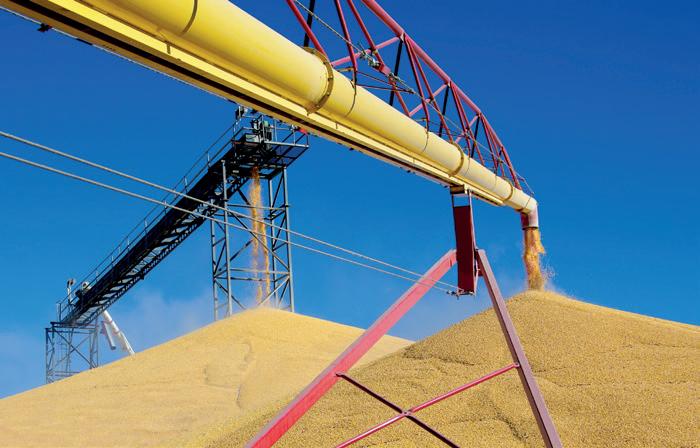
Some 321,000t of wheat were imported in July – far exceeding the five-year July average of 150,000t. The amount also dwarfs the 249,000t imported during July and August last year – and the five-year average of 311,000t for those two months.
Commodity traders at ADM suggest the strong pound is limiting any potential price rally by pulling imports closer to parity.
UK prices have seen little movement, it says, although delivered premiums have firmed in a bid to keep sellers engaged.
production
England is heading for one of its worst harvests on record, following recordbreaking rain last winter which reduced yields, disrupted drilling dates and reduced the crucial wheat harvest by almost a fifth.
The wheat harvest for England is estimated to be more than 2.2m tonnes or 18% down on 2023, suggests the Energy and Climate Intelligence Unit –leaving the UK dependent on imports to meet demand for bread and other baked goods.
More broadly, the ECIU suggests final figures will show a drop of 13%
or 3m tonnes on the five-year average for the total GB cereal harvest – comprising wheat, winter and spring barley, oats and oilseed rape.
Farmers are advised to remain vigilant for ergot in stored grain – another legacy of the challenging 2023/24 growing season.
In the heap, ergot can be easily mistaken for rodent faeces. A known toxin, farmers feeding home-grown cereals should keep a particularly close eye on livestock for any unusual symptoms, even after it has been removed. Ergot sclerotia can be cleaned out to some extent using sieves in a grain cleaner, with the caveat that any grainsized pieces, powder, or fragments broken off during the cleaning process will slip through.
“The most effective way to remove ergot sclerotia is by using a colour sorter,” says Ollie Johnson, AHDB head of farming systems and agronomy. “These can be sourced through many mobile seed treatment firms and can reduce the alkaloid levels in grain.”


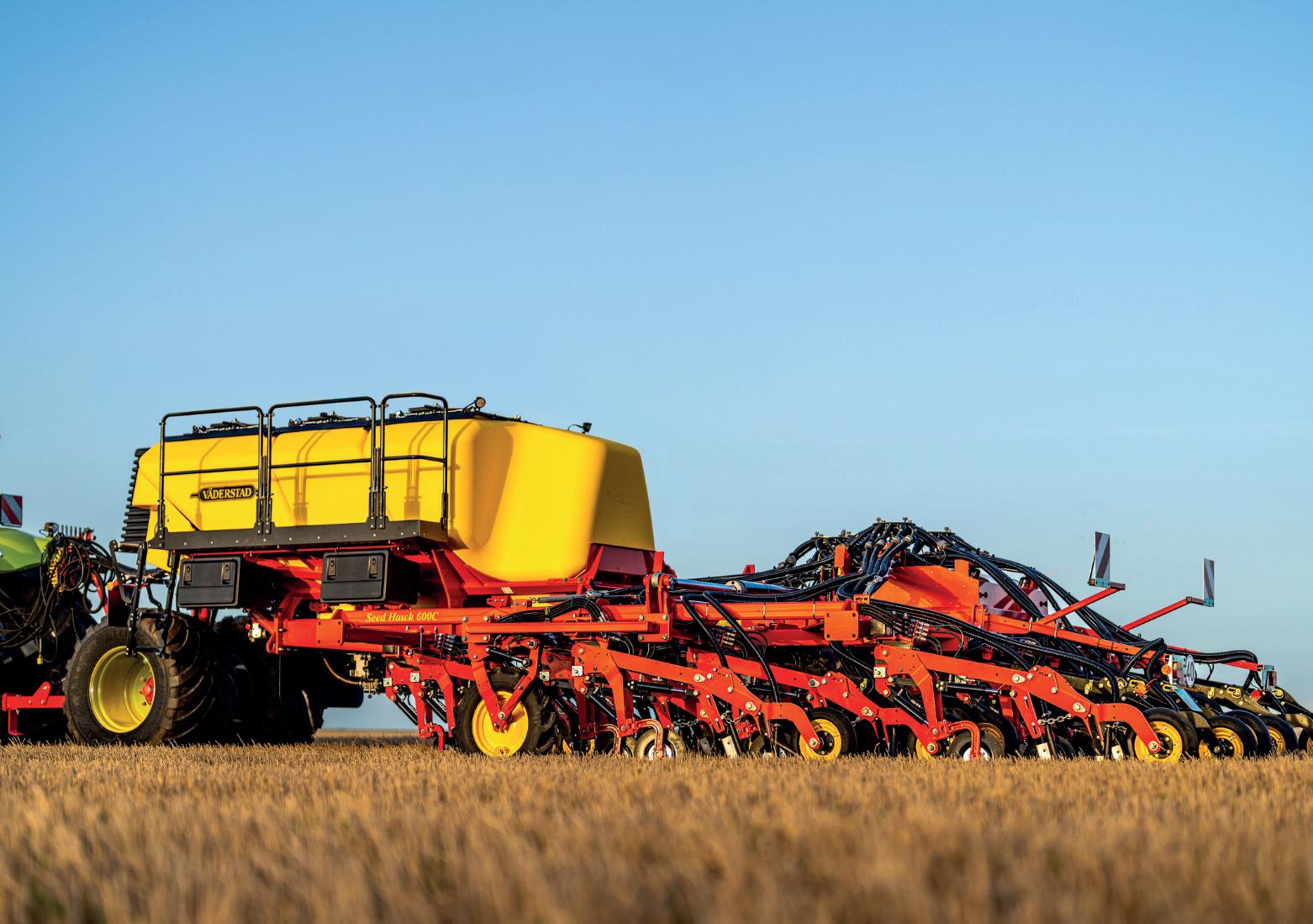

Two of the biggest names in the UK potato industry came together to launch a new mobile on-farm washing rental service at last month's Potato Days UK event.
Haith and Grimme UK teamed up to unveiled the latest high-capacity Haith mobile vegetable washer at the new industry event held at Dyson Farming’s site in Norton, near Lincoln, on 4-5th September.
"Last year, Grimme UK offered our mobile washer to selected customers on a rental basis, which proved incredibly popular,” said Haith managing director Duane Hill.
“In fact, there was so much demand for the service that after Grimme UK sold the rental unit, they immediately bought a second mobile washer so growers could continue to use it on a rental basis.”
Alongside the rental option on the Haith washer, Mr Hill said Grimme UK was helping growers bypass factory lead times by having stock machines available to buy immediately.
Haith developed its first mobile washing system in 1979 to help farmers supplying crisp and chip factories deliver a clean washed sample, free from stones and foreign objects.
Today, the latest Haith washers boast many innovative features to deliver low cost running such as high efficiency motors and automatic sludge removal to reduce water usage.
Available on a chassis that can be towed by a tractor or HGV, the washer features an integral stone separation system and an automatic sludge and floating waste system on the outfeed for the removal of hollow heart potatoes, wood, plastic, or any other foreign material.
To ensure machine longevity and ease of maintenance, a special shaft sealing system allows all bearings to be mounted externally. This makes them easily accessible for servicing and extends their life, unlike some machines on the market with bearings running underwater.
The automatic sludge removal system is helps keep water usage to a minimum and contains waste. An HMI touchscreen enables the operator to adjust and control the whole system
There’s lots of demand for the rental service “

Right: The new washer is proving extremely popular, says Duane Hill Below: The Haith mobile washer is available to rent or to buy

farmers FF Goose & Sons have taken delivery of Haith’s latest box filler – which removes the need for a cross-conveyor and uses one less drop point at Whaplode Drove, near Spalding, Lincolnshire.
Designed to work across the end of a 2400mmwide (eight-foot) grader, the Supa Fill 600 Pro XL offers several innovative features, including a patented three variable speed belt system for gentle crop transition.
Haith has also replaced the shaft-mounted motor gearbox units with powered drum motors,
and a positive drive rack and pinion arrangement has been used instead of the traditional chain and sprocket transmission.
The result of these innovations is a box filler that can handle up to 60 boxes per hour, which is achieved as one box filling conveyor can be lowered into position while the opposite side is filling. Single belt machines cannot deliver this.
Haith developed the XL version of the Supa Fill 600 PRO at the request of David Goose, who grows potatoes, onions, brassicas and cereals in partnership with wife Julia and daughters Holly and Nenah.
Higher prices for baled straw have prompted reminders to ensure soil nutrients are adequate ahead of autumn drilling.
More growers have chosen to bale rather than chop straw this year, with prices reaching almost £100/tonne in July, according to figures from the British Hay and Straw Merchants’ Association.
“Reduced cropping areas and short straw heights have both contributed to the straw shortage this year. Demand for straw has been strong – including from as far away as Ireland, says the association.
But taking straw off the field can contribute to soil nutrient deficiencies, says Toby Ward at Origin Fertilisers. Growers will be wary of later drilling this season and getting crops off to a strong start is paramount, he adds.
“Nutrients removed by baling, re-
duced soil organic matter, and any potential compaction, will need to be addressed before drilling. This is likely to be earlier than in some years to ensure crops are well established before winter.
Major nutrients such as phosphate and potash are essential to early plant development and protein formation, and incorporating straw maintains these nutrients and avoids a potential shortage for the following crop.
Phosphate is vital for crop establishment and plants need a reliable and available source of it to promote root development, says Mr Ward. Avoiding phosphate lock up is also essential to maintain plant availability.
Products such as Origin Enhanced Phosphate (OEP) can give an immediate and sustained supply, adds Mr Ward. Growers who baled straw should be considering applications around drilling to ensure levels are replenished.
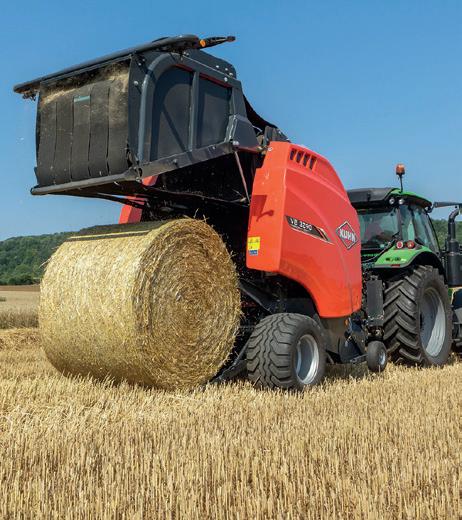
Soil sampling will highlight any deficiencies. A balanced nutrition plan can then be drawn up to account for any nutrients lost through baling –giving crops access to phosphate to support establishment.



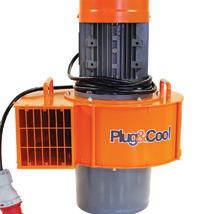




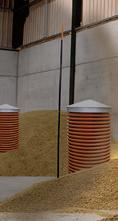










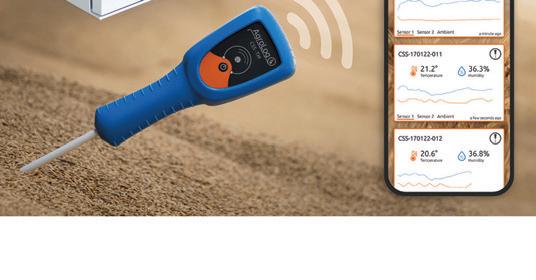
G.R. BOURNE
G.R. BOURNE
DITCHING & DRAINAGE CONTRACTOR
DITCHING & DRAINAGE CONTRACTOR
New Cut Ditching / Deepening and Re-Profiling Banks / Mudding
New cut ditching • Deepening
New Cut Ditching / Deepening and Re-Profiling Banks / Mudding


360 Excavators 8-20 tonne + 15m Long Reach Reed Cutting Buckets & Tree Shears
360 Excavators 8-20 tonne + 15m Long Reach Reed Cutting Buckets & Tree Shears
• Re-profiling banks • Mudding
Spilsby, Lincolnshire
Reed cutting buckets and tree shears
Tel: 07961538107 or 01754890683
Spilsby, Lincolnshire
Email glynnbourne@btinternet.com
Tel: 07961538107 or 01754890683
Email glynnbourne@btinternet.com
360 excavators 8-20 tonne + 15m long reach
Provider of feeding systems for baby animals for over 30 years, from leading manufacturers specialising in this area – Forster Technik, Urban, Britmix and Hiko.






T: 07961 538107 or 01754 890683 E:
Spilsby, Lincolnshire
Covering Bedfordshire, Cambridgeshire, Essex, Hertfordshire & Suffolk
Working with our network of local engineers and installers we are able to offer technical support and a service and repair facility on all types of lamb and calf feeding equipment along with an extensive range of spare parts and consumables.
Tel: 07718 270607 (Martyn)
Tel: 07836 387632 (Paul)
Email: macsorder@live.co.uk www.mandacalfsystems.co.uk







Looking for an independent, reliable and practical ‘one stop shop’ steel framed building service with the personal touch?
Contact Johnstruct Ltd today...







There’s










Crops should be handled gently to optimise sugar levels, says the BBRO.

Warm weather during the latter half of September has prompted reminders that freshly lifted sugar beet should be delivered to factories as soon as possible.
“Temperatures are still relatively warm and therefore it is best to stick to a just-intime delivery programme where possible –or short storage to reduce respiration sugar losses,” said an advisory bulletin from the British Beet Research Organisation.
The BBRO bulletin confirms that some
harvesters have struggled with hard ground – despite high rainfall during much of the season. Growers and contractors should check for losses behind the harvester, it adds.
Growers should also check for surface root losses when conditions change or when moving between fields, soil types and varieties. And they should also ensure crops are crowned correctly and handled gently.
This will optimise sugar levels during harvest – and reduce the amount of root breakage and bruising. Growers should also mon-




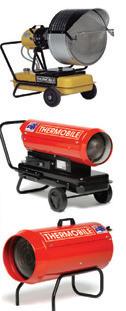
itor lifted crops daily after harvesting and ensure high-risk beet is delivered promptly. Airflow can be improved by ensuring clamps are not too high and have low soil tare. Growers should avoid pushing up beet into a big pile and levelling the top of the clamp.
Post-harvest, ploughing is recommended in fields with ConvisoSmart sugar beet varieties. This is to assist with stewardship – burying beet tops and small unharvested beet reduces the risk of re-growth.
The BBRO reports a mix of foliar diseases in-field. But it says there is nothing to date of any major concern. However, herbicide resistance in annual broad-leaved weeds is becoming more common.
Working in conjunction with ADAS and British Sugar, the BBBO has produced a video update including information regarding seed collection for testing. The short film is available via the BBRO website.
Some areas have been affected by beet moth, but again the BBRO says this does not appear to be a widespread problem. In most cases, larvae are appearing in previously affected areas, says the BBRO bulletin. Factory intakes opened later than usual after a challenging season delayed drilling. Bury St Edmunds and Wissington opened on 16 September, followed by Newark on 23 September and Cantley on 7 October.



15pdonationfor every 22.5kgbucketsold in the fight against breast cancer
Supporting the

(Reg. Charity No 1080839) 15pdonationfor every 22.5k




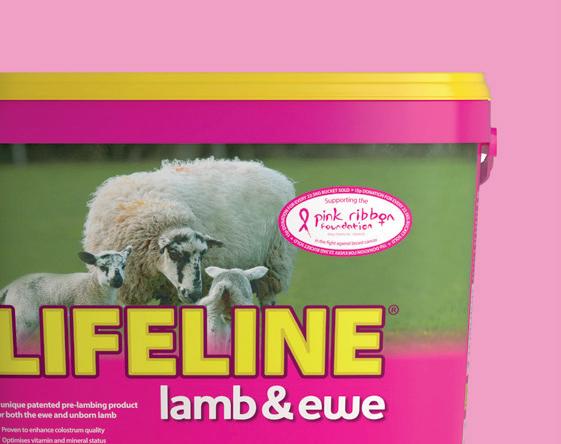

• Spoilage risk in warm wet season
• Helps combat yeasts and moulds
• Treated silage is more palatable
Asilage additive to aid maize forage fermentation is likely to pay dividends this autumn – helping to prevent significant mycotoxin accumulation.
A good additive will restrict the development of unwanted yeasts and moulds. But a separate specialist treatment should be used where high mycotoxin levels are already present in the harvested crop.
With this year’s warm, damp growing conditions potentially favouring moulds and mycotoxins in maize, using an additive could be particularly timely, explains Volac silage scientist Mark Leggett.
‘Clear evidence’
But mycotoxin levels were 98% lower hen an additive was applied to the crop at ensiling. This is important because mycotoxins are associated with poor rumen function, ketosis and immune suppression in livestock.
Right: Blue mould growth was clearly visible in untreated maize silage (top) Below: Good silage is more digestible to livestock
“Yeast levels in treated silage were 96% lower
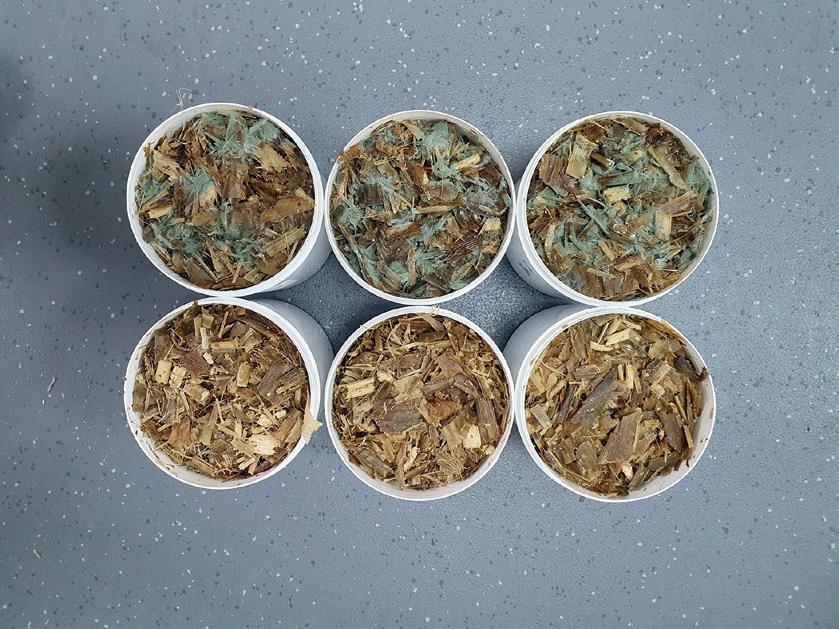
dence that the company’s Ecocool additive can significantly improve silage quality due to the way it acts against yeasts and moulds during exposure to air, explains Dr Leggett.
Yeast and mould growth generally occurs following exposure of silages to air in a process called aerobic spoilage – a cascade of events triggered initially by yeast breaking down the all-

“In turn, this raises silage pH, which allows mycotoxin-producing moulds to grow in the silage,” explains Dr Leggett. “The clearest sign that silage is suffering aerobic spoilage is usually the production of heat.
A little over a month after ensiling, yeast levels in the treated silage were 96% lower than in the untreated silage. Further measurements showed the untreated silage took 1.5 days to start heating when exposed to air, compared to 3.5 days for untreated silage.
“If silage is heating, it’s losing a massive amount of energy,” says Dr Leggett.
Although the crop at ensiling contained no detectable mycophenolic acid or roquefortine C mycotoxins, deoxynivalenol (DON) mycotoxin levels produced by Fusarium moulds, were higher than 10,000 parts per billion.
“With DON already present in the harvested crop, it is important to note that ensiling, with or without the additive, did not reduce these very high levels of DON contamination,” says Dr Leggett.
DON levels rose to more than 17,000 ppb in the untreated and treat-
continued from p31
ed silage after ensiling and exposure to air. A fourth mycotoxin, zearale none (ZON), was also detected in the silage but at low levels.
In cases like this, a specialist myco toxin remediation treatment, such as Ultrasorb from Volac, would be need ed to reduce the mycotoxin burden of such silages in the final feed when fed to livestock, suggested Dr Leggett.
Digestibility of the treated maize silage was 4% higher than the di gestibility of the untreated silage by as much as 4%, after exposure to air. This is significant because higher digestibility is associated with improved milk yield.

Using an additive could be particularly timely, says Mark Leggett
Farmers facing mixed silage quality should balance dairy cow rations carefully to optimise milk production this winter, says Mark McFarland, Lallemand Animal Nutrition.
“This spring saw higher rainfall followed by an almost non-existent summer. The previous mild winter also meant an increased proportion of fibrous winter growth in the first cuts done by farmers without sheep to graze swards.”
“This meant many farmers delayed cutting, resulting in reduced nutrient density, or those who couldn’t wait any longer took a wet cut, diluting what little sugar was in the grass, with soil contamination increasing the risk of poor preservation quality.”
Silage analysis results released by Trouw Nutrition reflect this nutrient density challenge, showing a higher fibre index, lower digestibility (D-value) and reduced metabolisable energy (ME) compared to last year’s first cut silage.
“Try to minimise dietary straw inclusion, and, where silage quality or dry matter differs significantly between cuts but fermentation quality is good, feed more than one cut for better diet consistency – even if it means opening another clamp,” says Mr McFarland.
He says: “Try to minimise dietary straw inclusion, and, where silage quality or dry matter differs significantly between cuts but fermentation quality is good, feed more than one cut for better diet consistency - even if it means opening another clamp.
Mr McFarland also recommends adding a proven rumen modifier to the ration to unlock more energy from the fibre fraction and to get more out of the diet overall. “Including a rumen modifier will prove particularly beneficial this year.”
Depending on the acid load level of the diet, the digestibility of grass silage in the rumen can increase by 5-9% in the presence of a rumen-specific live yeast such as Levucell SC. This in turn increases feed efficiency and milk yield.
A well-fermented silage with low digestibility is less of a challenge than any wet silage with poor preservation quality, adds Mr McFarland.
For those who didn’t inoculate silage this year, it could be a long winter. Clamp dry matter losses are colossal from grass cut with low sugar content in wet conditions. To make matters worse, it can leave you with a forage cows simply don’t want to eat.”
Achallenging season which has played havoc with silage reserves means a fodder budget will be vital on most farms this winter.
With both fodder quality and quantity affected by this year’s weather –including a wet spring and dull summer – it is essential to assess forage reserves to ensure they’re sufficient for the winter ahead.
“Will it last? Will it provide the per formance you need?” asks Janet Mont gomery, agriculture product manager for grass and forage specialists Baren brug. “You need to work out those an swers and act accordingly.
“We’re not facing an emergency, but neither is there 100% confidence that the country has sufficient for age quantities and qualities. There is a chance that feed will be short. But if you act now, and plan, then you won’t get caught out later.”
Dry cows and milkers will need up to 1.5t of silage per month, says Ms Montgomery. “The first step should be to check how much you have, and whether it’s enough for winter.”
To calculate a budget effectively ef fectively, producers also need to de cide the condition in which pastures should be left at the end of 2024. “It’s always risky to assume that pastures will come back in time for spring.
It’s best to assume that winter will be difficult, so plan for the worst.
“If you’re conservative about when to house the cows, even if it means breaking into the clamp earlier, there’s a good chance that the grass will be ready when you want it,” says

year’s silage, with late cuts in particular displaying low biomass and nutritional content.
“Ask too much of them during the critical autumn period – for example, by not managing residuals properly, or not indexing fields to prioritise grazing, or reseeding – and they won’t be ready for you in 2025. Then your fodder budget will have been for naught.
“But protect them, and pastures will pay you back handsomely.”
To measure approximate quantities in the clamp, multiply length of the pit by width by average height to calculate the silage volume. After that, divide that figure by 1.35 for the amount in fresh tonnes.
Then take the average silage requirement per day and multiply that by the number of animals to feed, by the number of feeding days re-quired. “You’ll then be able to compare demand and supply of silage, and see if there’s likely to be a deficit.”
“If there’s one time you don’t want to merely estimate silage quality, it’s now.
“You really need to know what you’re feeding, so the second step is to test and analyse your silage, and to calculate your dry matter content. Then you’ll know what supplements you’ll require and can plan accordingly.
“Yes, bought-in supplements will always be more expensive than homegrown feed but by knowing exactly what you will need to balance energy and protein, to maintain your performance targets, you can plan ahead and map out your options in good time.
“Treat the 24/25 fodder budget as a ‘must do’, not an optional extra. It’s worth a bit of time now to ensure you can make it through the winter comfortably, without watching performance tail off.”






Celebrating 175 Years
Saturday 16th November
Sunday 17th November
Email: sue@staffscountyshowground.co.uk
Entries Close 16th October




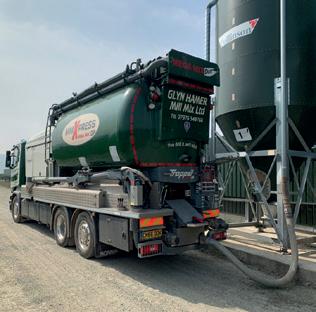



With numerous suction and discharge options including directly into feed bins or separate bunkers, we are able to provide an efficient, traceable and consistently high standard of service for our customers.
Based in the West Midlands we run a fleet of modern ‘Tropper’ machines specifically built for precise mixing and accurate weighing operated by our experienced, friendly drivers.




Optimising feed resources and want maximum value from silages? It’s vital to know nutritional quality of forage, using that to formulate feed rations to optimise production, e cient feed use and minimise adverse e ects on the environment.
Feed Adviser Register (FAR) members provide professional support and quality feeding advice. With strict entry criteria to join FAR, based upon training and experience, Advisers must complete core training and competency tests to become full members of the Register and membership is renewed annually requiring continuous professional development.
Over 1,200 feed advisers from all over the UK are registered, providing advice for ruminants, pigs, poultry and game.
FAR Advisers rely on consistent information from nutritional analysis of feed materials including silage throughout the feeding season. e Forage Analysis Assurance (FAA) Group exists to ensure that analysis is accurate and consistent. Members complete regular pro ciency tests to ensure reliable quality results for customers.
Visit our website, www.faagroup.co.uk to nd out more about our members, check their analysis performance and learn best practice farm sampling techniques for silage bales and clamps.
A forage analysis report with the FAA quality assured mark, means you and your feed adviser can have con dence in those results and plan your winter feeding rations.
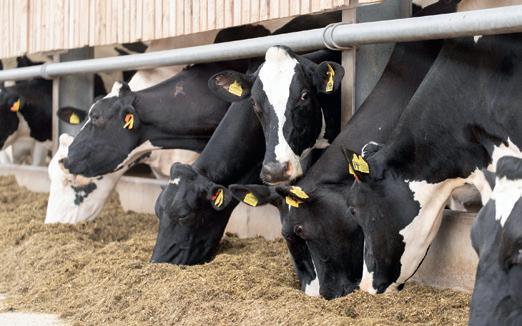










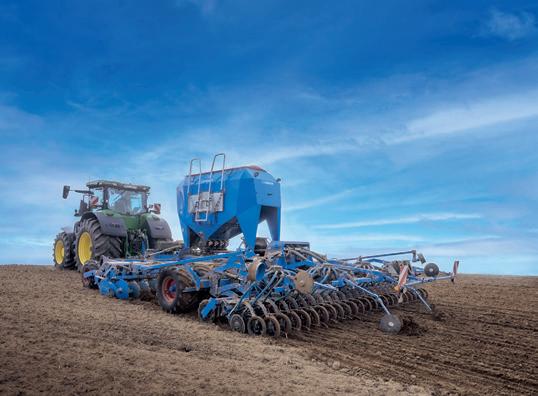
•
•
•
•
•
•
•
•
•

• Biosecurity ensures profitable production
• Growth targets and feed conversion goals
• Disinfectant and cleaning delivers results
Good biosecurity is helping a Derbyshire broiler producer hit growth targets and feed conversion goals.
George Adsetts rears 3.5 million birds annually on all-in-all-out systems across three units – including the family farm near Chesterfield. All birds are grown for Gafoor Poultry Products in Preston.
“Hitting growth and feed conversion targets is key to the business and to our relationship with our processor,” George comments.
“We need to control all we can and pay close attention to biosecurity to reduce the risk of pathogenic infections. All sheds are vermin proofed, all feed comes from approved mills and we implement rigorous vehicle and human disinfection protocols.”
Chicks move into woodchip bedded sheds at 40g and are reared until 30 days at which point they are thinned out by a third, selling birds weighing 1.6kg. The remainder stay until 38 days at 2.8kg. Feed conversion averages 1.5 with 3-4% mortality.
As soon as birds have left the farm, the sheds are cleaned by the farm team to remove all muck and bedding. They are blown down to remove any debris across the fittings, before being presoaked with a misting system before the washing team arrives.
The contract cleaning company washes all surfaces using a 2% foam detergent solution which is then left for 30-60 minutes before being rinsed off from the top to bottom of the shed. The buildings are then left overnight to dry before application of a disin fectant.

Defra approved disinfectant Neogen Viroxide Super is applied using an orchard spray at 1%. This is left to stand for several hours with sheds vented to improve drying. The floors are then disinfected a second time with Neogen Farm Fluid Max.
Once the sheds are thoroughly dry, Mr Adsetts swabs the drinking lines, feeding lines, floors and walls. The swab results confirm how effective the protocol has been by giving a measure of bacterial activity.
Above: Profitable production needs healthy birds
Below: Drinkers should be free from infection
We need to control all we can “

means the results are not back until after we have restocked, but they provide valuable information we can use to review the effectiveness of hygiene proto-cols to make more informed decisions next time.”
Producers looking for instant results could opt for measuring adenosine triphosphate (ATP) and have valuable information on the effectiveness of their clean before new chicks arrive. This can be done using an ATP reader. Regularly reviewing cleaning protocols will ensure they are as effective as possible, says Dan Clow from Neogen. Pathogens are constantly evolving, meaning habitual disinfectants may be less effective, he explains.
“When developing a programme, it is important to ensure chemicals are used in the right order to prevent them from working against each other. It is also important to ensure they are used at the correct dilution, with an appropriate contact time to allow them to work.”
Mr Adsetts believes regularly reviewing the programme helps keep on top of pathogen risks, tackling any areas of concern. “We can manage the applications and the physical process, but we have to trust the chemistry.
“By paying attention to detail on cleaning and disinfection, we can ensure each new cycle gets off to the best possible start and reduce the risk of pathogens compromising how a cycle will grow and use feed efficiently.”

Lamb producers could achieve a three to one return on investment by using specialist supplements before tupping.
A productive lambing season relies on a good tupping tupping, says nutrition specialists Rumenco. Recent trials suggest a ewe supplement ahead of tupping can significantly improve the number of live births – and subse-
Farmers could see a 22% increase in live births, says Rumenco
quent income from lamb sales.
Feeding ewes Rumevite Sheep Super from two weeks pre-tupping and six weeks pre-lambing is likely to pay dividends as part of a comprehensive feed and supplement strategy, says product manager Amy Wright. Rumenco trials data suggests farmers can see a 22% increase in live births at a cost per 100 ewes of £712 (843 kgs
of supplement) – and an additional net income of more than £2,600 after additional finishing costs.
“Tupping is a busy period of the year for sheep farmers,” says Ms Wright. “We wanted to share our trial results to show that supplements are a genuine necessity for anyone who wants to maximise the return for their
“By feeding quality supplements from two weeks before tupping and 8 weeks during tupping, ewes can be in peak physical condition and health to maximise the chances of a successful pregnancy and embryonic survival.”
Alister Davies, of ForFarmers, says zinc is among the key minerals which should be encouraged in diets ahead of tupping. Sodium is also important for pre-tupping ewes, aiding nutrient
Body condition score has one of the biggest impacts on fertility and therefore scanning results, says Mr Davies. “Ewes should be a body condition score of 3.5 in lowland flocks or 2.5 in hill flocks at the point of being put to the tup.”
Feeding fish oil can bring huge benefits to flock productivity, while also aiding utilisation of high forage diets. “ForFarmers’ new pre-tupping bucket is high in Scottish salmon oil, while also containing zinc and sodium,” says Mr Davies.
Aphysical examination of your breeding rams is worth the time, writes Nerys Wright.
I hear the saying ‘the ram is half your flock’ but if we were honest with ourselves, sometimes we a little complacent when it comes to checking our rams before the mating season
Check for under or overshot teeth, missing teeth and molar abscesses by feeling along the jaw line. These affect the ram’s ability to eat and potentially impact body condition score (BCS).
Scrotal circumference should be at least 36cm for mature rams and 34cm for ram lambs. The testicles should feel like a human’s flexed bicep, with no lumps or bumps present and be evenly sized.
Check locomotion and posture. Inspect all feet, including along the coronary band, for signs of current or previous infection and excessive horn growth.




I was a shadowing an inspector at a ram sale recently – and surprised at the variation in testicle size. The overall circumference of both testicles is critical. Smaller testicles have lower fertility because testicle size correlates with the amount of semen they produce.






A smaller circumference does not mean they are infertile, but their fertility is likely to be reduced. Carry a tape measure with you when purchasing or checking your rams, it will generate some interesting discussion, if nothing else.



Aim for BCS 3.5–4.0. Rams can lose up to 15% of their bodyweight, or up to 1 unit of BCS during the mating period.
Ensure routine vaccinations or treatments are adminstered 10 weeks before the mating season to ensure they don’t affect sperm production.

amine your existing rams as well. The sperm maturation process takes 49 days (seven weeks).




Carefully examine new rams when they arrive on your farm, but don’t forget to physcially ex-



This is why we put so much emphasis on making sure rams are fit and fertile at least 10 weeks before the tupping season, much ear-


lier than when they are turned out with the ewes. Above are the five Ts. For further information, there are great resources on the AHDB website. Nerys Wright is an independent sheep consultant. For more details, call 07891 187643 or visit sheepconsultancy.co.uk.



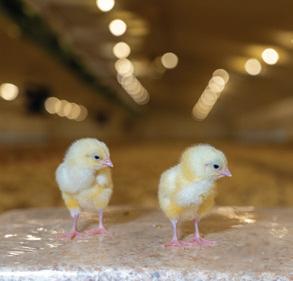



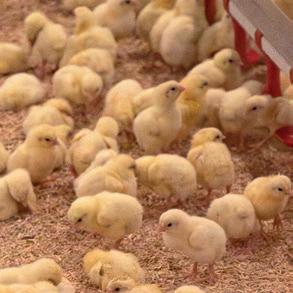



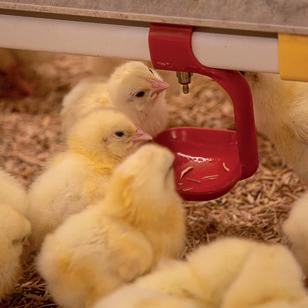

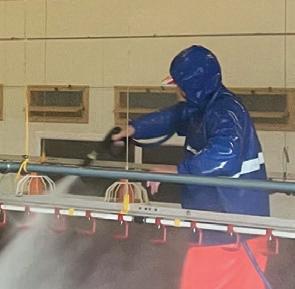

















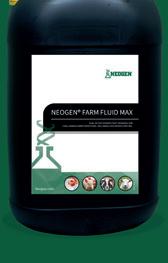












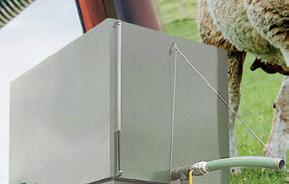
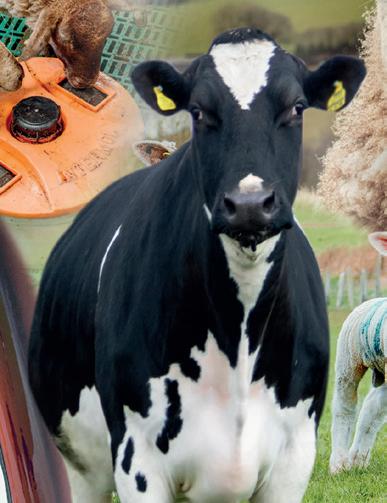

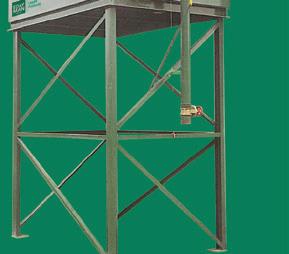
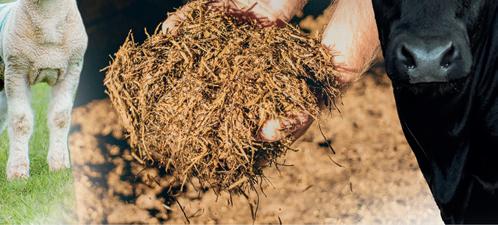












• Aim to encourage sustainable farming
• Business, mortgage and development
• Partnership with LEAF farm assurance
Farm businesses wanting to become more sustainable can now receive discounts on loan fees thanks to a high street bank.
It follows the launch of the HSBC Sustainable Farming Pathway which includes discounted loan arrangement fees for eligible growers and livestock producers on term lending amounts from £25,001.
Applicants must complete a LEAF Sustainable Farming Review or be businesses with LEAF Marque certification. The discount arrangement fees apply to flexible business loans, commercial mortgages and property development loans.
HSBC head of agricultural Banking Martin Hanson said the bank’s research showed that 70% of UK farms were making commitments to transition to sustainable practices – including schemes to support nature and biodiversity.

Sustainability is high on the agenda
“By working with LEAF and future partners, we have the opportunity to directly support farmers who want to make sustainable choices,” said Mr Hanson.
Regular sustainable practices are already taking place with 38% of farmers regularly soil testing fields to inform fertiliser applications and 28% of HSBC dairy clients undertaking a carbon audit.
Investment
When HSBC asked farmers how they wanted to become more sustainable, survey respondents said they wanted
to invest in renewables (54%), slur ry storage (22%) and energy efficien cy (20%).
LEAF Marque farmers were increas ingly focused on incorporating sus tainable practices into their opera tions. This included how to balance soil sensitivity, protect water, invest in renewables and boost biodiversity.
high on the agenda for the UK’s agri sector, and the new HSBC Sustainable Farming Pathway can help many busi nesses in their transition journey.”
Eligibility criteria

LEAF Marque is an environmental as surance system recognising more sus tainably farmed products. It is based on the sustainable farming principles of Integrated Farm Management (IFM). This is a whole farm business approach that delivers more sustainable farming – mixing modern technology and traditional methods to deliver prosperous farming that enriches the environment and engages local communities.
The LEAF Sustainable Farming Review is a self-assessment online management tool to help farmers farm more sustainably. It helps farmers monitor performance and set targets for improvement across the whole farm.
Two-thirds of farms have adopted measures to improve biodiversity
The Institute of Agricultural Management (IAgrM) is offering free student places to its annual conference this autumn in London.
The National Farm Management Conference will look at how emerging farming systems, automation and artificial intelligence can benefit agriculture. It takes place on 7 November at the QEII Centre, Westminster.
IAgrM director Victoria Bywater says the free tickets will enable the next generation of agricultural professionals to engage with industry experts, gain insights into the future
of farm management and network with stakeholders.
“We strongly believe in supporting young people in agriculture, and it’s vital we equip future professionals with the knowledge and connections they need to succeed,” she says.
“As an organisation, we’re proud to be able to invest in the future of the industry by offering free places to students, helping them prepare to tackle the challenges and opportunities that lie ahead.”
To claim a free ticket, students should email events@iagrm.com.
Aroadmap outlining how producers can profit from more sustainable farming methods has been unveiled in two landmark reports.
The reports – a joint initiative by Lloyds Bank and the Soil Association – detail the framework needed for a sustainable UK farming industry and set out a comprehensive environmental baseline for UK farmers.
Involving 685 farms in total, across the country, Soil Association Exchange worked with 12 industry partners to be able to assess nearly 240,000 hectares of UK farmland in this firstof-its-kind assessment.
As lead partner, the Lloyds Banking Group is the largest financier of UK agriculture. It funded more than 550 farmers to be involved in the groundbreaking Soil Association Exchange environmental baselining study.
Goals in tandem
The two reports provide a roadmap
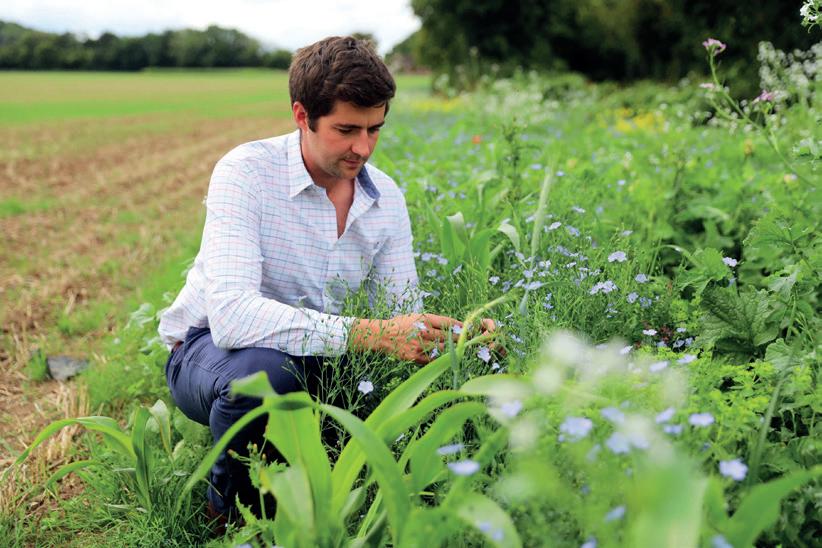
Mr Gridley said there was a clear need for farmers to measure their environmental credentials at scale. Using a common methodology provided a route to achieve this and addressed the risk of inaction and scepticism in

“Our approach also offers farmers confidence to make informed decisions - balancing environmental sustainability with profitability, ensuring farmers have the tools and guidance they need to access the funding needed to support their transition.”
Lloyds Bank head of agriculture Lee Reeves described the partnership with Soil Association Exchange as the most ambitious of its kind, focusing on a holistic view of farming’s environmen-
Mr Reeves added: “Our reports showcase the opportunity to deliver actionable insights that help farmers improve practices to become more resilient, while also securing long-term
Sustainable farming was not just about reducing environmental im-
“It’s about securing the future of the entire UK farming and food supply chain. Farmers need consistent support, reliable data, and financial incentives to make this transition suc-
The reports set out a clear, datadriven pathway towards sustainable
benefitting from the baselining initiative
dence to thrive long-term, both economically and environmentally, said Mr Reeves.
“Our approach balances sustainability with profitability.’
“To further address the challenges identified a new cross-supply chain model is being piloted to reward farmers for sustainable practices, a scheme which also forms part of the 10-year partnership.
With a working name of ‘Exchange Market’, the pilot will pool funding from a range of supply chain businesses, making payments to farmers over sustained periods to support them in transitioning to more sustainable practices.
Environmental outcomes will be monitored and verified using the Soil Association Exchange platform, allowing those supply chain partners to evidence impact and progress towards Scope 3 reductions.
Farmers have long needed a standard method to measure their environmental impact – and the Soil Assocation Exchange roadmap sets out to provide this.
The environmental impact of farms was assessed across six different areas; soil health, biodiversity, animal welfare, water, carbon and social impact – in a way which can be used across the industry.
Advisers will be able to use the data to create bespoke farm action plans for implementing more sustainable practices and for accessing new funding streams, supporting the transition to more sustainable farming.




















































































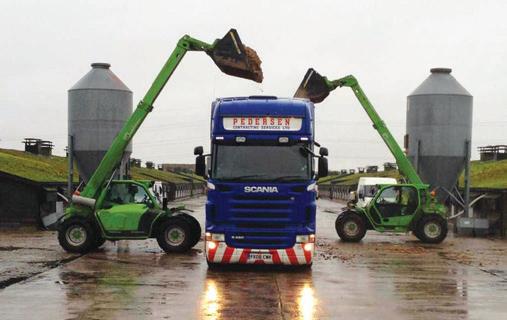


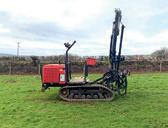



















• Three times more carbon dioxide
• Crop deserves our closer scrutiny
• Call to consider soil carbon loss
Maize crops grown on drained peat soils emit three times more carbon dioxide than burning natural gas, suggests a study.
Researchers say the finding highlights the need to consider soil carbon losses relating to bioenergy crops grown on drained peat – so better decisions can be made when it comes to generating renewable energy.
Recent years have seen a rapid expansion in biomethane crops such as maize to help meet net zero targets. But the study suggests their status as a cleaner alternative to fossil fuels deserves closer scrutiny.
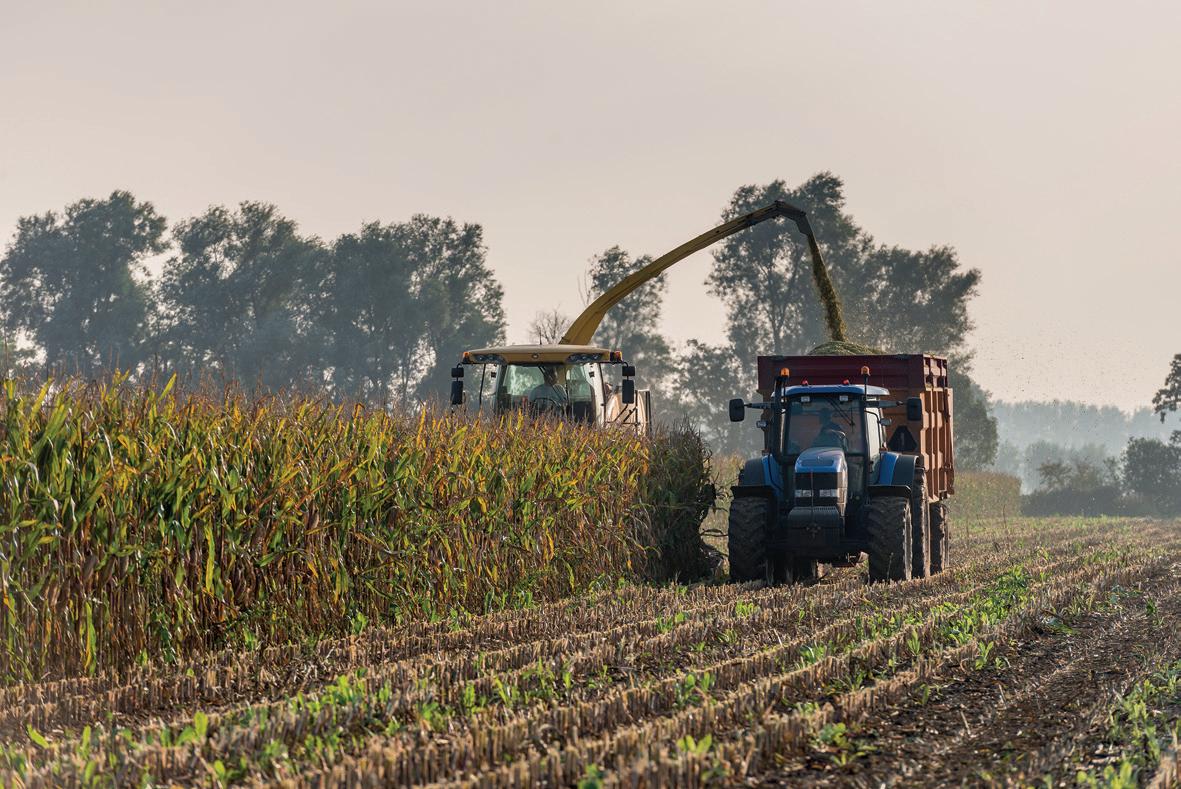
natural gas.
Some of this increased cultivation – on drained peat – emits three times more carbon dioxide than it avoids by not using natural gas, according to the study by the UK Centre for Ecology & Hydrology (UKCEH).
The researchers estimate the area of UK peatland used for cultivating maize for biomethane has tripled since 2015. But they say emissions from draining these carbon-rich wetlands for farming have been widely overlooked.
“Biomethane is an important renewable energy source – but it seems unwise to use drained peatland primarily for generating bioenergy in areas where this leads to higher CO2 emissions than the fossil fuel it replaces,” he said.
Wetland drainage to grow crops released carbon that has been locked up in their soils for hundreds of years. This released carbon was then exposed to atmospheric oxygen, forming CO2 and resulting in huge amounts of additional greenhouse gas.
The study estimates UK area of drained peat soils for all maize cultiva-
“Emissions have been widely overlooked
More farmers could benefit from generating income from renewable energy, says the trade association representing the solar power sector.
Revenue from solar power could be a useful source of farm income at a time when growers and livestock producers face the ongoing uncertainty of unpredictable commodity prices and changes in farm policy, said Solar Energy UK.
“Compounded by external factors such as the cost of energy, inflation, changing subsidies and
economic volatility, a perfect storm of crises is pushing farm margins to the brink,” it warned.
An online survey launched by Solar Energy UK aims to understand the pressures faced by farmers, landowners and those working in the agricultural sector – and the extent to which renewable energy could be a new income stream.
Chris Hewett, chief executive of Solar En-
Continued on p44
tion rose from around 6,000 ha in 2015 to over 11,000 ha in 2021. Meanwhile, the proportion of the crop grown for bioenergy rather than food increased from 20% to 34%.
Not all bioenergy production on drained peat leads to higher emissions, said the researchers. Crops grown on peatland managed with higher water levels – known as paludiculture –could mitigate climate change, they suggested.
It is also less damaging to use maize as a ‘break crop’ within crop rotation, said Prof Evans. This would have commercial value and offset some of the CO2 emissions associated with food production on peat.


The UK’s electricity infrastructure remains a stumbling block – and must be resolved, says John Wallis .
nderstanding available options will be key for farmers contemplating using land for wind or solar farms. Even landowners not considering this kind of scheme may have power generation infrastructure forced upon them via Compulsory Purchase Orders.
Energy Secretary Ed Miliband has already approved three large-scale solar farms that were previously stuck in planning to highlight a significant shift in policy. I expect government moves to trigger more projects.
We are probably involved in 40 to 50 projects across the north of England alone – and the majority are grid-scale solar and battery storage sites. We have also been working with a number of clients on wind projects.
Some of the most proactive are almost ready to go to market.
In most cases the farmer isn’t involved in running, managing, or building the projects – they are ultimately leasing their land to a developer for a period of time, and they re ceive an annual income from it.
“It can be life changing as solar farms rents at the moment range from £850 to £1,200 per acre per annum, so it provides a really good, guaranteed income for the land owner with payments typically indexed to in flation and lasting 40 years or more.
These long-term, stable income opportuni ties are particularly appealing in an indus try often characterised by volatility. We’ve seen a big influx of solar schemes over the last five years, largely because the financial via bility of the projects has improved.
What’s happened more recently is that the
Continued from p43
price of the equipment, such as solar panels and batteries, has come down, and, of course, the energy price has gone up. Suddenly, these projects are viable on their own.
The question of grid capacity remains a factor and Wallis points out the national system was designed with central power stations feeding out power, rather than sporadic generation sites feeding power back in.
As a landowner you need grid connection, there needs to be capacity within the grid, and finally you need planning consent. Often, we come across clients who like the idea of a renewable energy scheme but fall short on one of those three factors.
To get anywhere near the government’s target of creating a zero carbon energy sys-
ture, the government will have to implement over the next five years is going to be vast.
Compulsory Purchase Orders are the government’s way of putting this infrastructure in place, sometimes without consent from the landowner.
Some of our clients at the moment stuck in the grid queue, where they’ve made an application, potentially have planning permission or are going into planning, but haven’t been able to connect to the grid.
While renewable energy schemes offer great opportunities during their operational phase, it’s crucial to plan for what happens at the end of the term.
Decommissioning costs can be substantial, so it’s essential to factor this into the planning process from the outset. Early advice, including tax planning and the technical details of contracts, is vital for anyone considering a renewable energy project.
John Wallis is a chartered surveyor with GSC Grays. For details, vist www.gscg-

Ground-based solar power is set to undergo a resurgence in the UK
ergy UK, said: “We believe the perspectives of farmers have been largely missing from the national conversation on farm diversification and renewables.
“We want our survey to assess the acute challenges farmers have faced this year, from turbulent energy prices to the weather.”
Mr Hewett added: “With margins
squeezed to near breaking-point, it explores solutions to mitigate uncertainty in fallow periods and asks farmers to what extent diversification could help them maintain their livelihoods.”
Solar Energy UK believes renewables – including solar, wind, battery energy storage or anaerobic digestion – present a significant opportunity for farmers to generate a more predictable and sustainable income stream.
The survey results will be compiled into a national report to inform discussions on the government’s farming and energy policy. Mr Hewett says this will ensure farmers’ voices are heard in the debate.
Taking less than 10 minutes to complete, survey participants will go into a draw for a £100 gift voucher.
To take part, please visit www.farmingsustainably.co.uk
The production of low carbon, plant-based insulating blocks could generate additional farm income and tackle labour shortages, say experts.
Encouraging farmers to diversify into making sustainable building materials for use on their own farms – or for construction in the local area – could benefit their own businesses, communities and the environment.
Led by Exeter University, a major new study will now test if the materials could lead to a “Harvest to House” system of building. The plant-based insulation blocks are made from crop by-products, such as maize haulm or straw.
Arable farmers in south-west England will now undertake a small-scale trial of the manufacturing process. Researchers will explore how diversification into building material production might complement food production.
The project is led by Caroline Nye and Matt Lobley from Exeter University’s Centre for Rural Policy Research in partnership with Local Works Studio – a sustainable construction engineer company.
Dr Nye said: “The needs of rural communities are often overlooked in policy decisions and rural poverty is exacerbated by low pay, insecure employment, unaffordable housing and poor public transport infrastructure.
“Participation and employment in a pioneering, environmentally sensi-
tive new industry, centred in the countryside, could foster a closer engagement of deprived rural communities with the land and bring benefits of a distributed local economy.
“Producing building materials could offer stability to local farm workers who need employment out of season, allowing them to re-main in the local area benefits to the farmer of experienced, consistent, higher skilled workers.”
Farm-made insultation could be used in local housing projects (Editorial credit: Simon Collins / Shutterstock.com)
Dr Nye believes it would also encourage repeat ‘returners’ to seasonal work – and stability to farmers who need to find other markets or make more from a crop. This would hopefully translate into more competitive pay for farm workers.
“We hope this project will be a beacon for a new potential cohort of workers - the growing number of young people from non-agricultural backgrounds attracted to the promise of land-based ecological citizenship.”
Researchers will make a short animated, visual pilot ‘manual’ of the manufacturing system, in an accessible and easy to digest format that can be readily shared and referred to by time-pressed farmers, as well as people outside agriculture.

hree Bobcat excavators and a compact track loader have been purchased by civil engineering company for renewable projects.
The new equipment was supplied by the AMS Bobcat dealership to PSR Turnkey Solutions. The machines comprise a Bobcat E19 1.9 tonne and two E27z 2.7 tonne mini-excavators and a T450 compact track loader.
A specialist in renewables and drainage solutions, construction company PSR Turnkey Solutions focuses on building infrastructure for the rapidly expanding renewable energy industry – as well as for drainage projects.
PSR managing director Paul Strutt said” “We specialise in build-
ing the infrastructure for the growing renewables market – from preparing the foundations for concrete plinths for rechargers for electric vehicles to building battery energy storage systems.
The new Bobcat M-Series T450 compact track loader features easyattachment capability, via a quick mounting system. This delivers versatility and time-saving efficiency across a wide range of different applications, says Mr Strutt.
“One of the first attachments we have bought is a sweeper, to provide clean up on site. I also see the T450 as a replacement for dumpers as it does not have to be filled up by other machines on site as it can do all that work itself.”


One advantage of an early harvest is the ability to get the hedge cutter in place and trim the ditches and hedges. But new regulations applied from May 2024 mean it seems that 1 September is the new date on which hedges can be trimmed. So any ditches cut in August mean a return journey for the cutter in early autumn.
This creates a short window of opportunity to get things done – and puts extra pressure on cultivations and logistical issues. Having now paid a second visit, the extra wheelings have to be removed - all at extra cost.
The thought process clearly doesn’t add up “


The idea behind delayed cutting is to protect the nesting birds. That’s important, of course. But with the conservationists now keen on a one-year-in-three cut of hedges, their thought process clearly does not add up.
The policy-makers who dream up these ideas are far removed from the day-to-day realities of practical farming. To confuse matters further, a derogation to cut hedges after 1 August following an oilseed rape crop sends mixed messages.
If some hedges can be cut from 1 August and not harm nesting birds, why can’t the rest? If the one-year-in-three rule is going to apply, the current idea of cutting hedges little and often – which has worked well for farmers and conservationists – is redundant.
Cutting every year enables small amounts of foliage off the hedge while maintaining a good height. This means a good food supply for the birds in the shape of berries for the winter months.

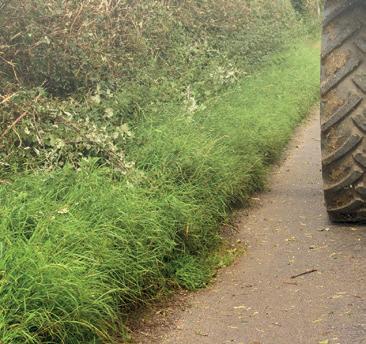
With the new ruling, after year three the hedges would be brutally cut back – potentially destroying a food source and perhaps even safe nesting habitats for smaller birds.
Why is it not practical to have a system that allows 50% of all hedges to be cut from 1 August onwards, rotating across the farm? Most nesting birds are long gone by then so disruption would be minimal and the countryside left in a tidy state.
Hedge-cutting during harvest for smaller farms was once a job done in the morning while waiting for the dew to dry – or one man following the combine around. For larger farms, the rules are even more problematic.
These days, it is usually a case of cutting ditches only to have to return from 1 September for hedges. With a 2m margin now also maintained between hedge and field everyone has to adhere to these rules.
The question is why do these rules exist? They don’t favour farmers or contractors and may not help the nesting birds. Farmers have maintained new hedges for generations.
At the same time wildlife has flourished. Change does not always work and the situation is a clear indication that farming is slowly being eroded by faceless bureaucrats.
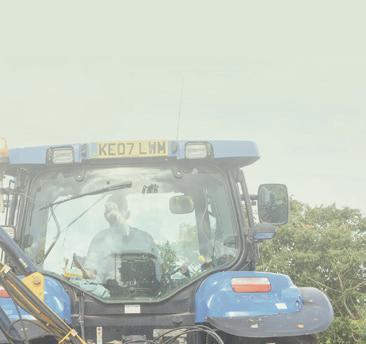










See us at Agri Expo -March 7th











See us at Agri Expo -March 7th









STRIAL, AGRICULTURAL OR COMMERCIAL TERNAL OR EXTERNAL
•INDUSTRIAL, AGRICULTURAL OR COMMERCIAL
•INTERNAL OR EXTERNAL

•STEEL FIXING

USH, TAMP OR POWER
•STEEL FIXING
TAMP OR POWER
•BRUSH, TAMP OR POWER
FLOATFINISHES
FLOATFINISHES
FLOATFINISHES
•FOUNDATIONS
•FOUNDATIONS
POULTRYUNITS AND STABLE YARDS
•FOUNDATIONS
• POULTRYUNITS AND STABLE YARDS
• POULTRYUNITS AND STABLE YARDS


MATERIAL ADVICE AND COSTING
MATERIAL ADVICE AND COSTING
• MATERIAL ADVICE AND COSTING
•SILO BASES
•SILO BASES
•SILO BASES
Wisbech, Cambs
RONS &SHED FLOORS
PRONS &SHED FLOORS
•APRONS &SHED FLOORS
NAEROBIC DIGESTION
•ANAEROBIC DIGESTION
•ANAEROBIC DIGESTION TANK BASES
TANK BASES
•GRAIN, POTATO& MACHINERYSTORES
TANK BASES
•GRAIN, POTATO& MACHINERYSTORES

•GRAIN, POTATO& MACHINERYSTORES
•PATHS, PATIOS AND DRIVEWAYS
•PATHS, PATIOS AND DRIVEWAYS

•PATHS, PATIOS AND DRIVEWAYS
•GROUNDWORKS & PREPARATION
•GROUNDWORKS & PREPARATION
•GROUNDWORKS & PREPARATION












